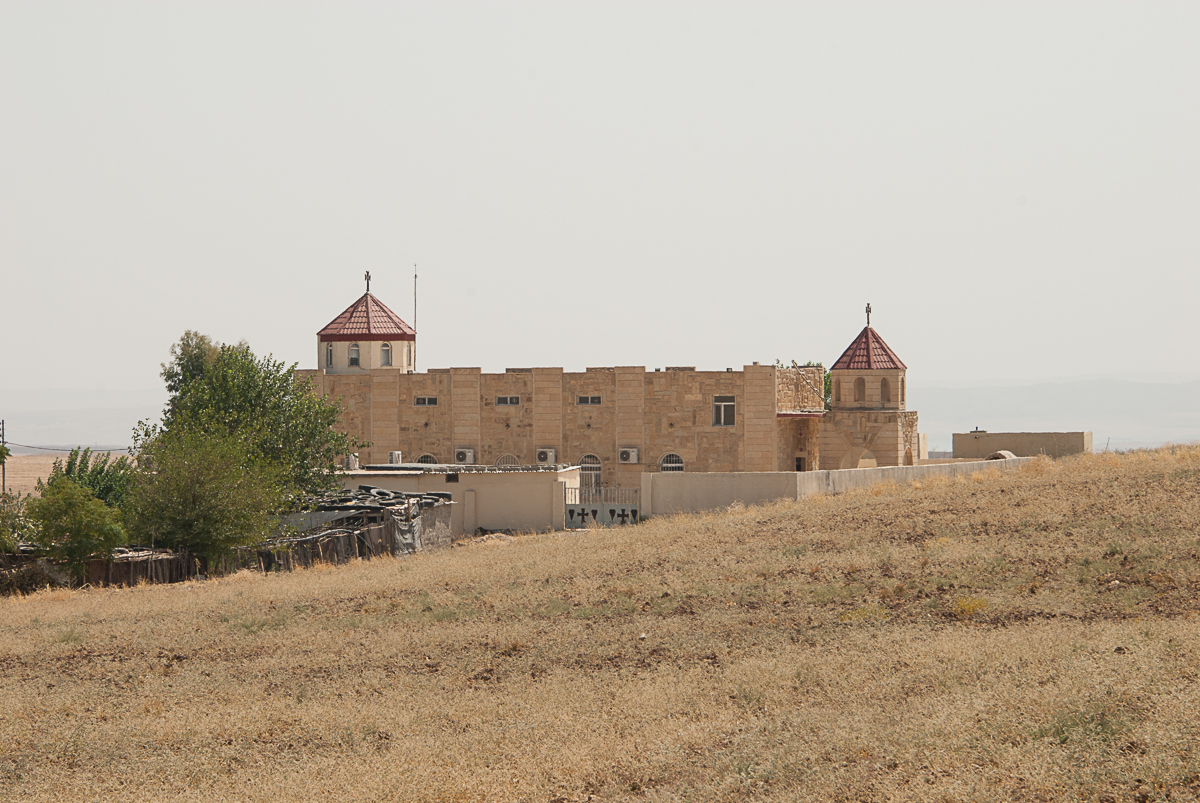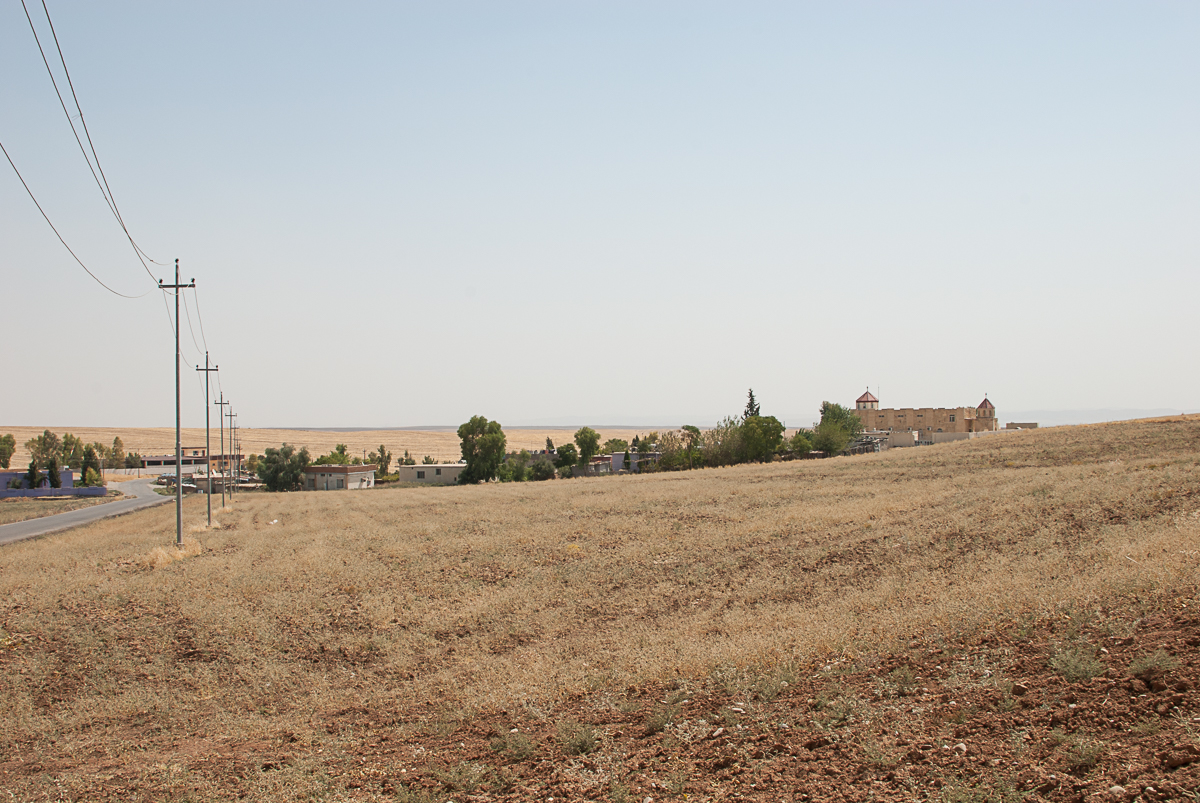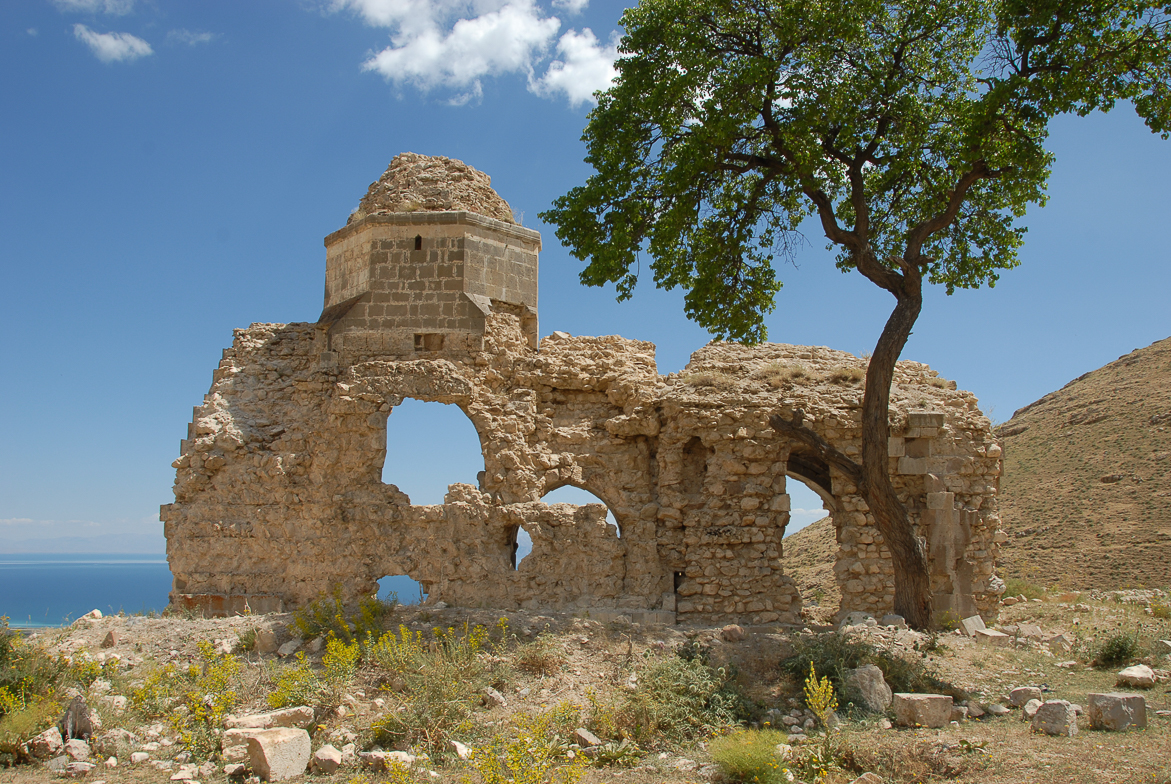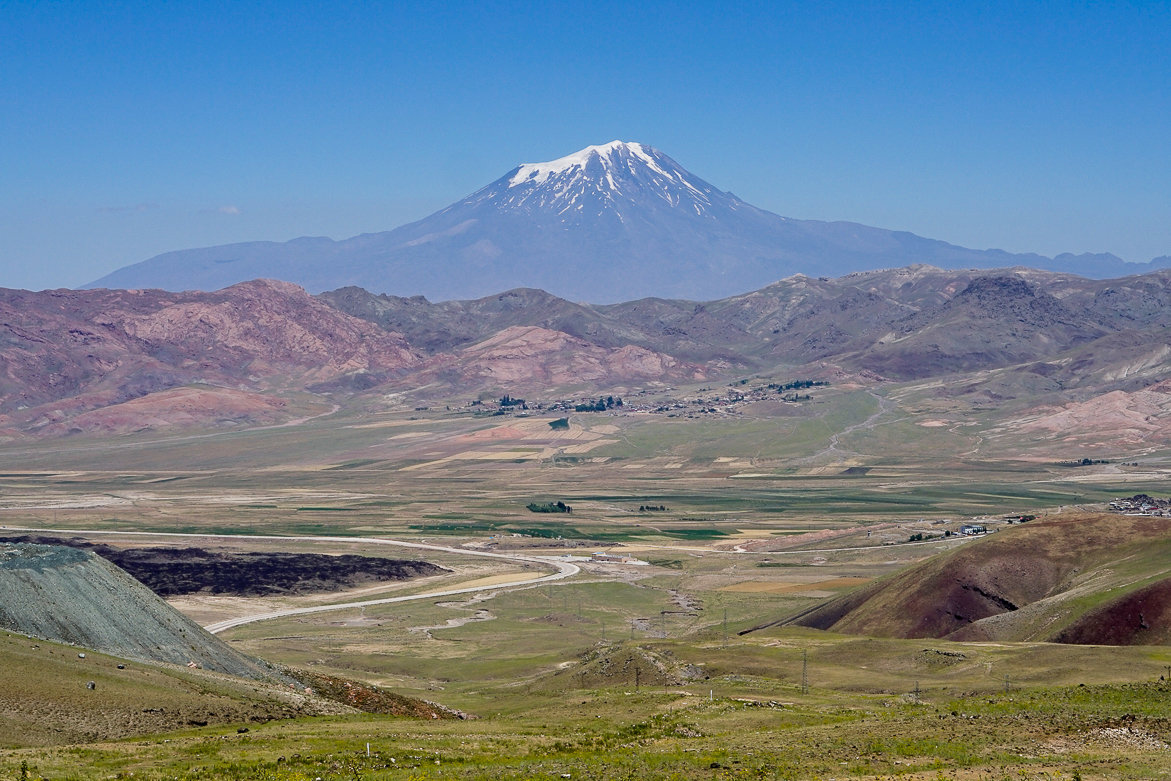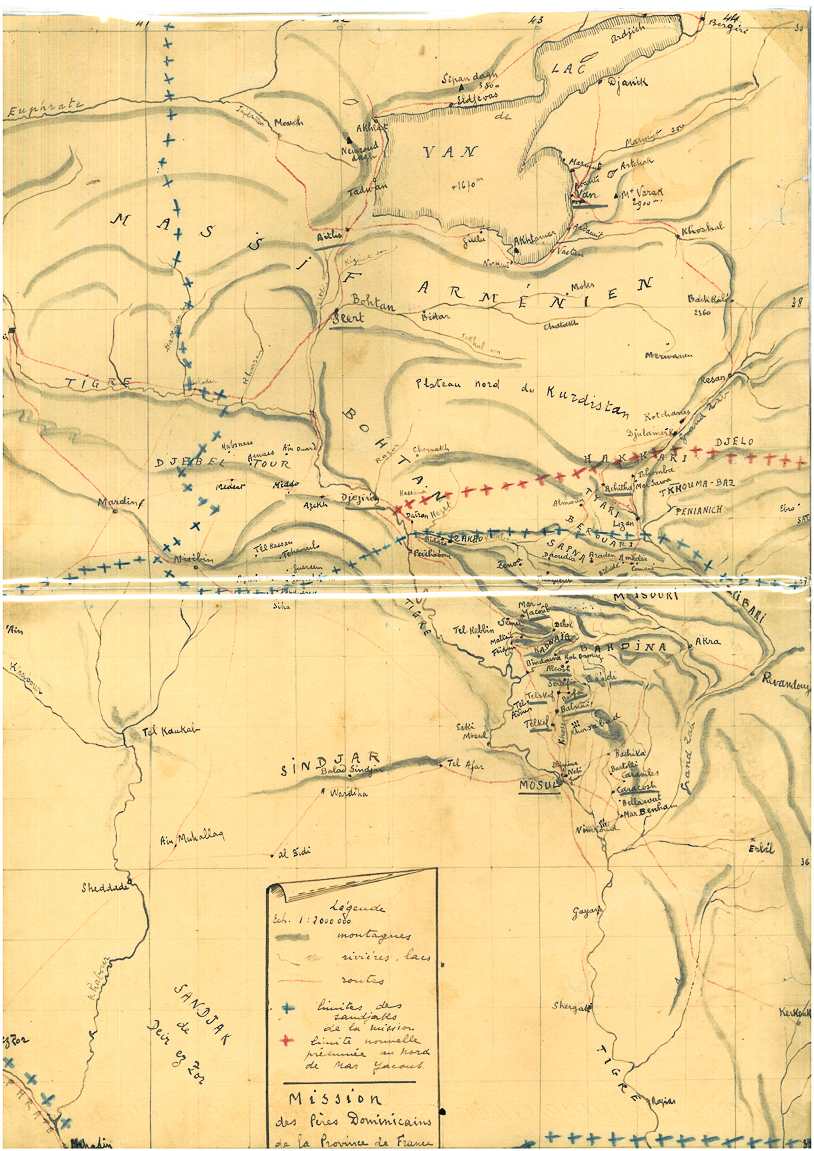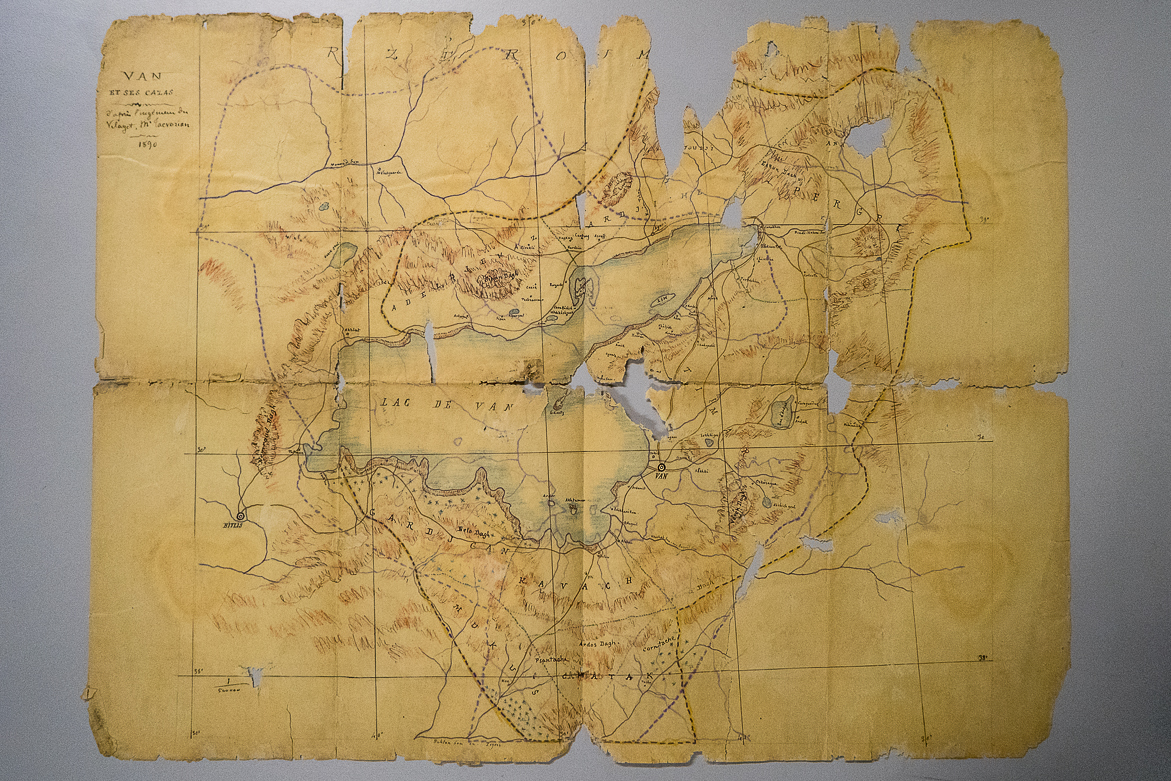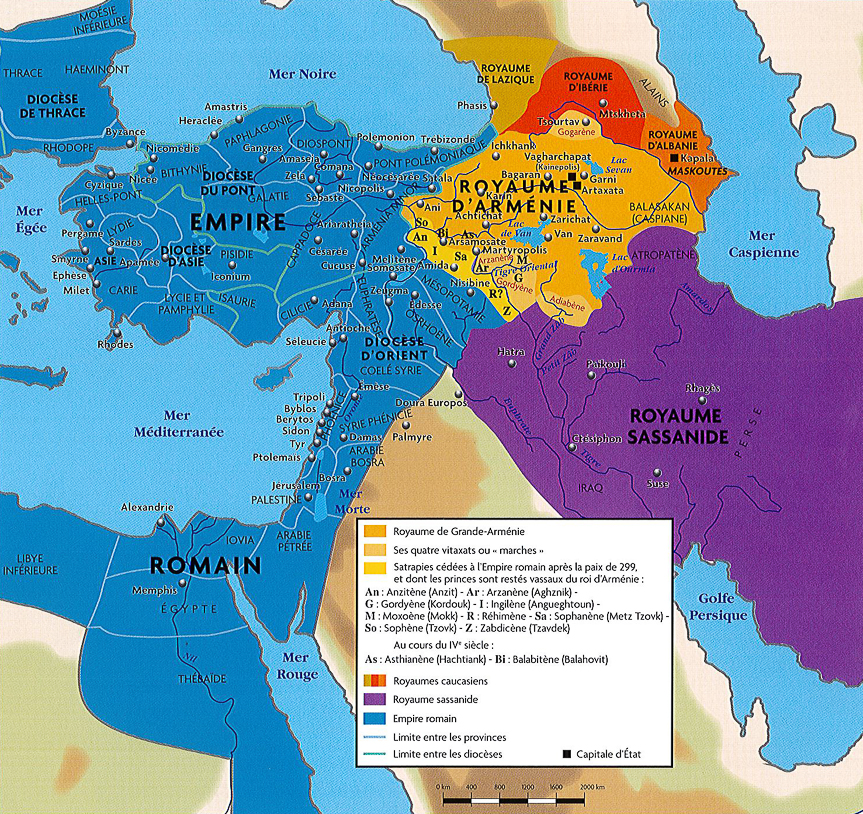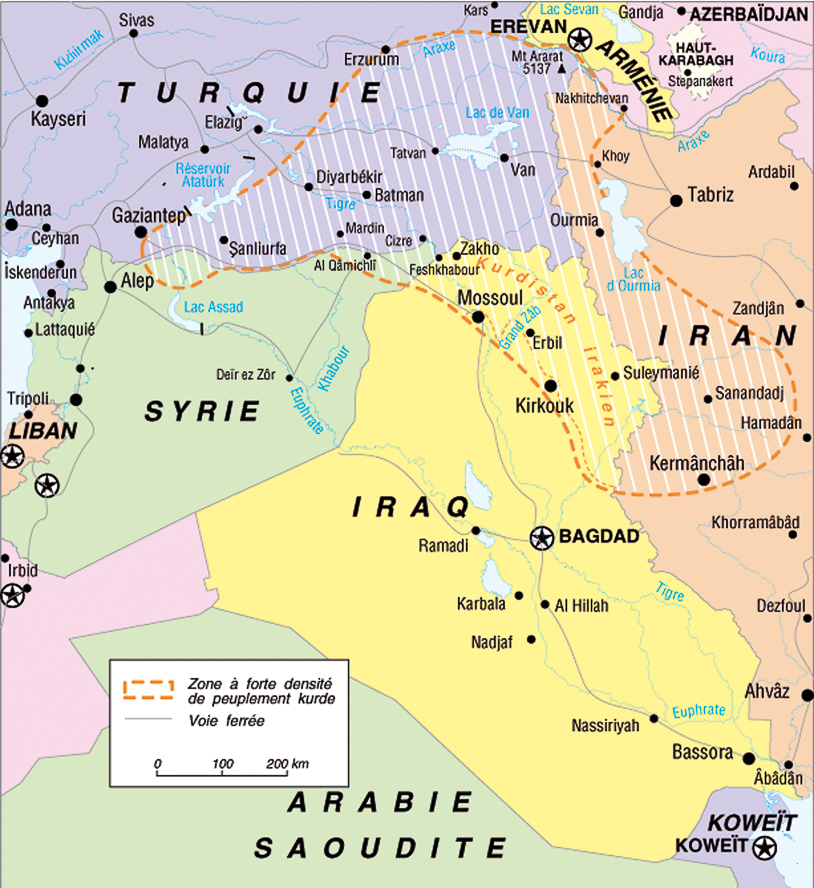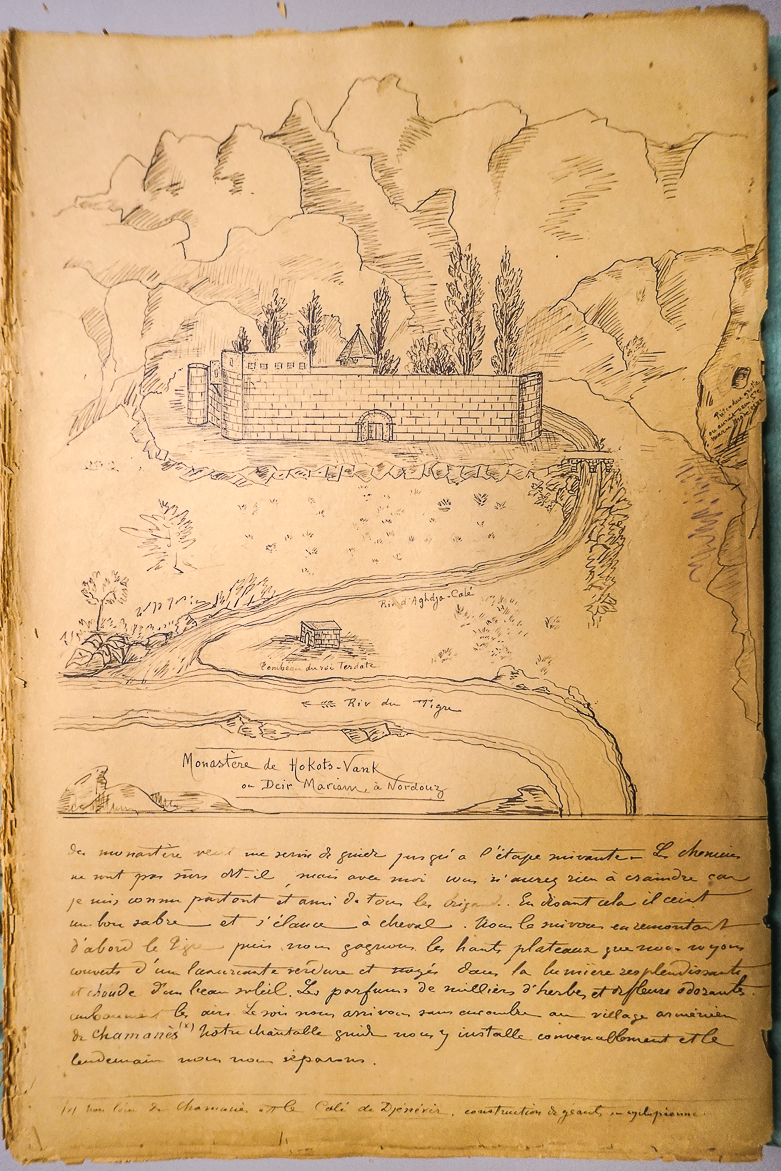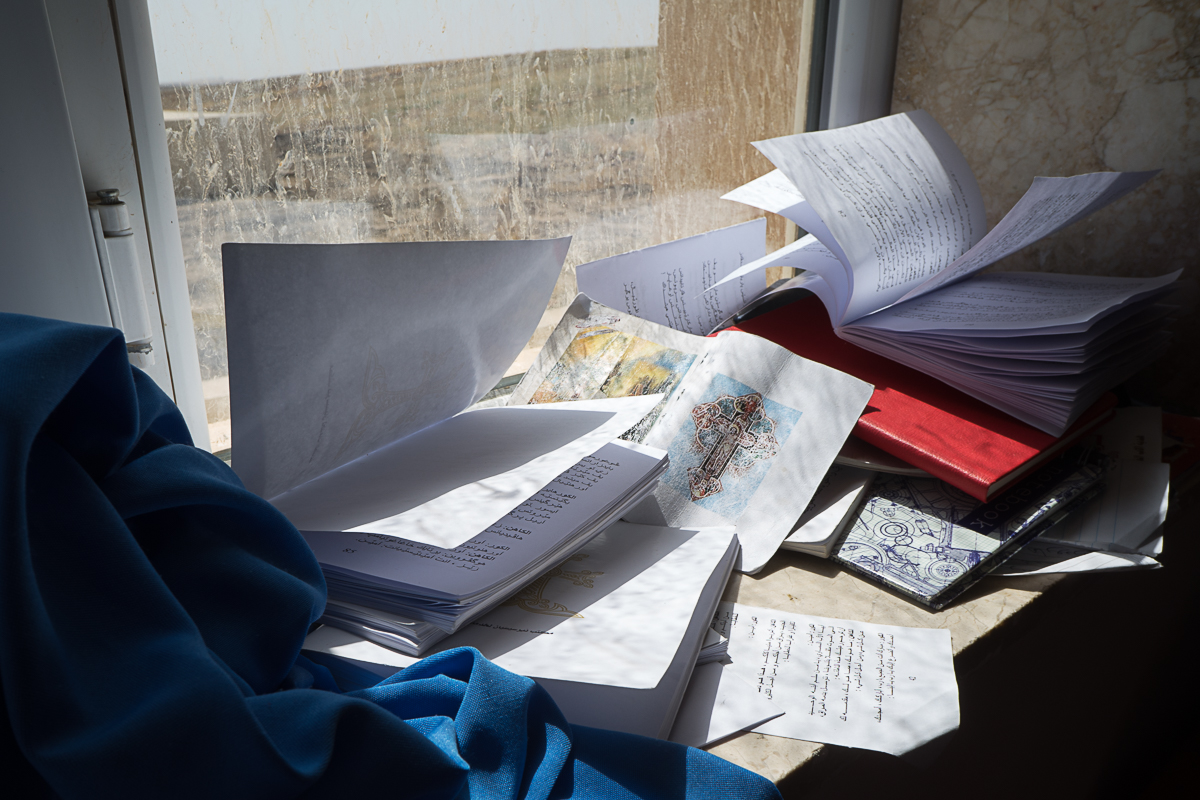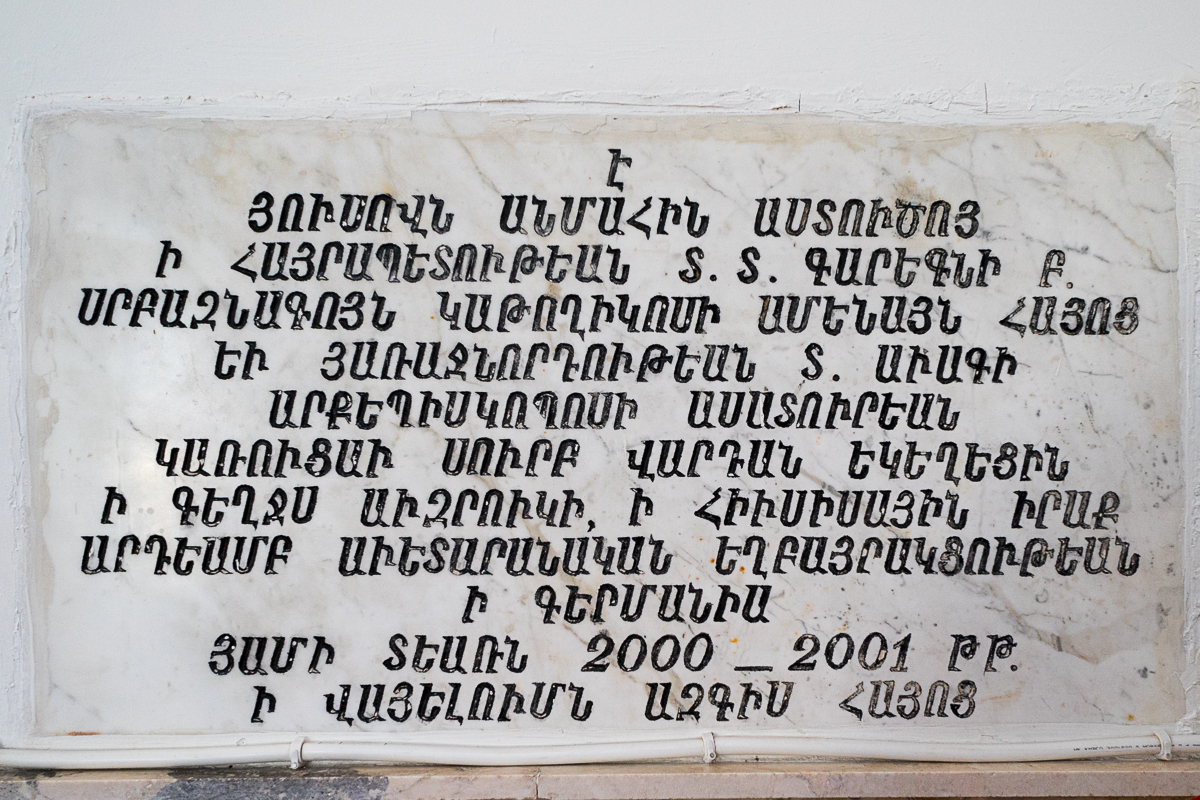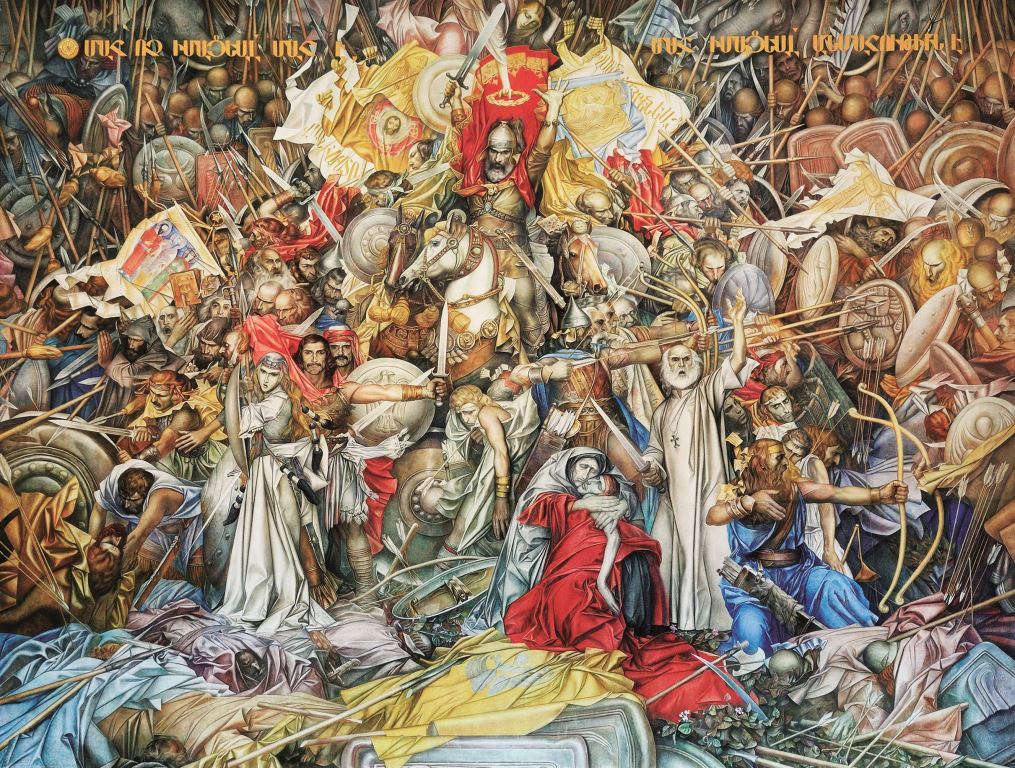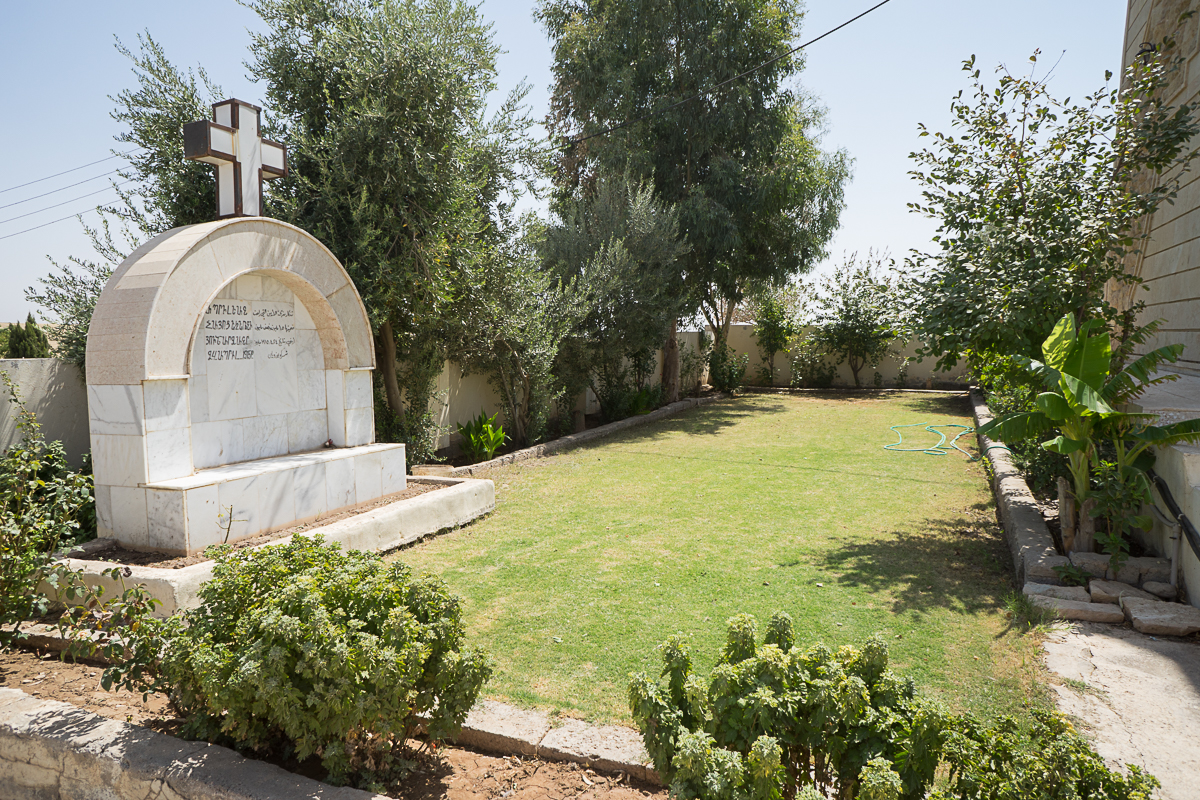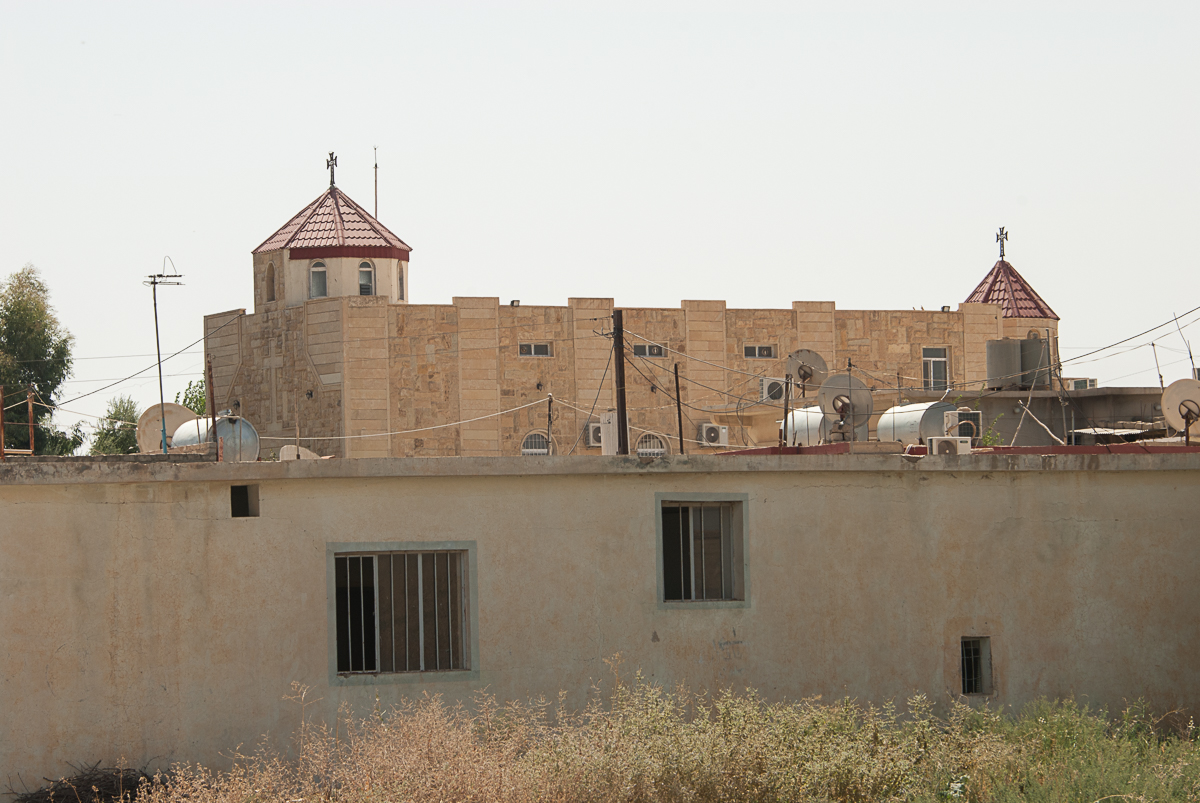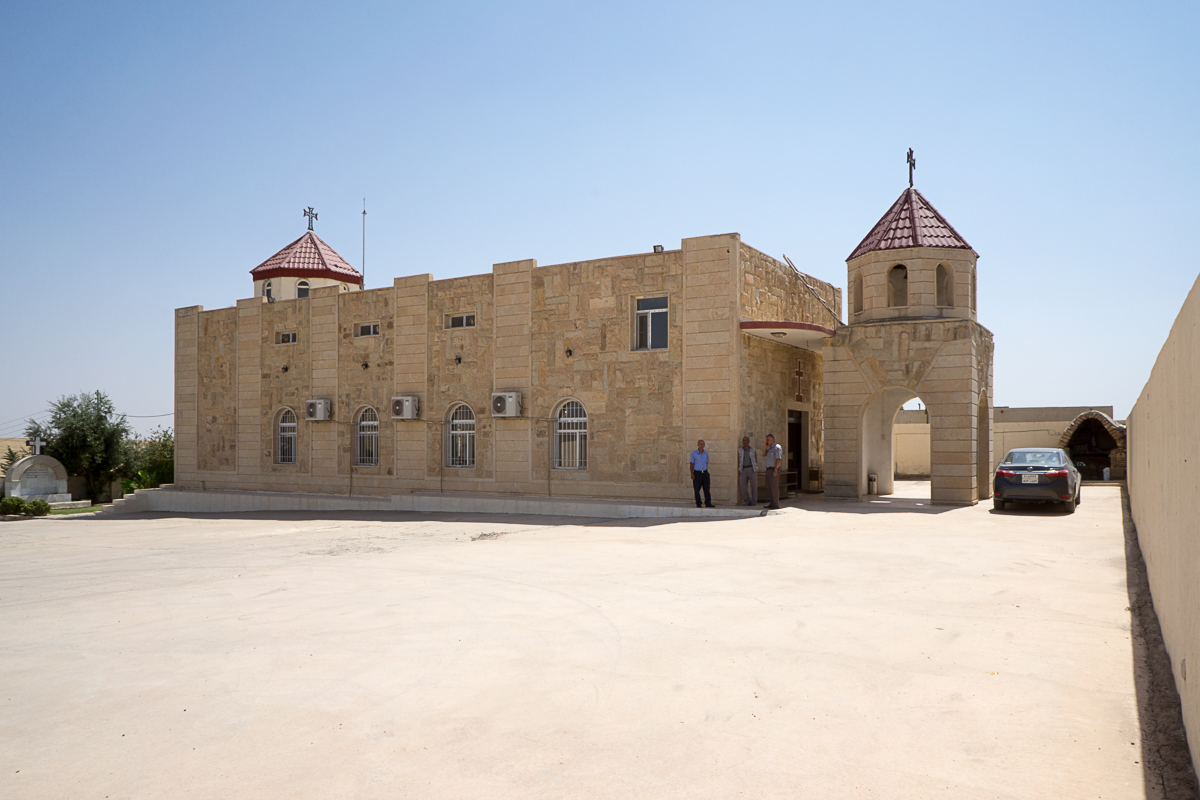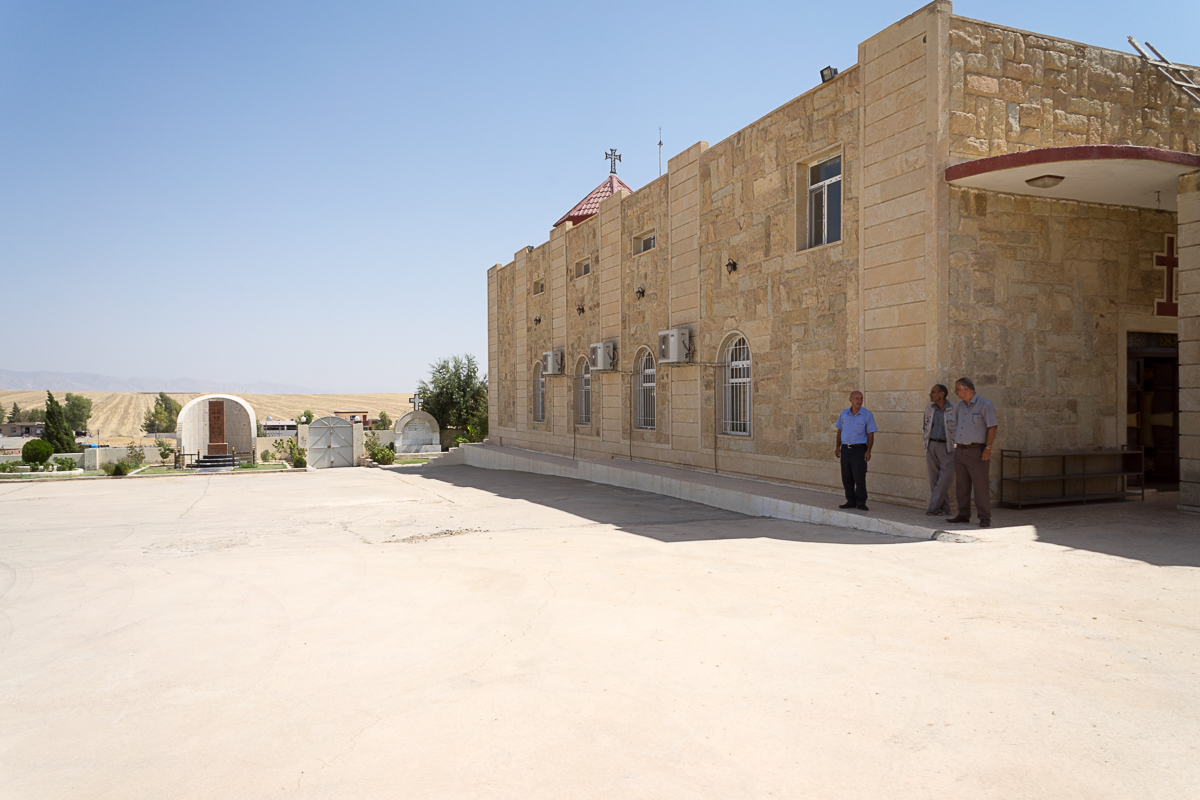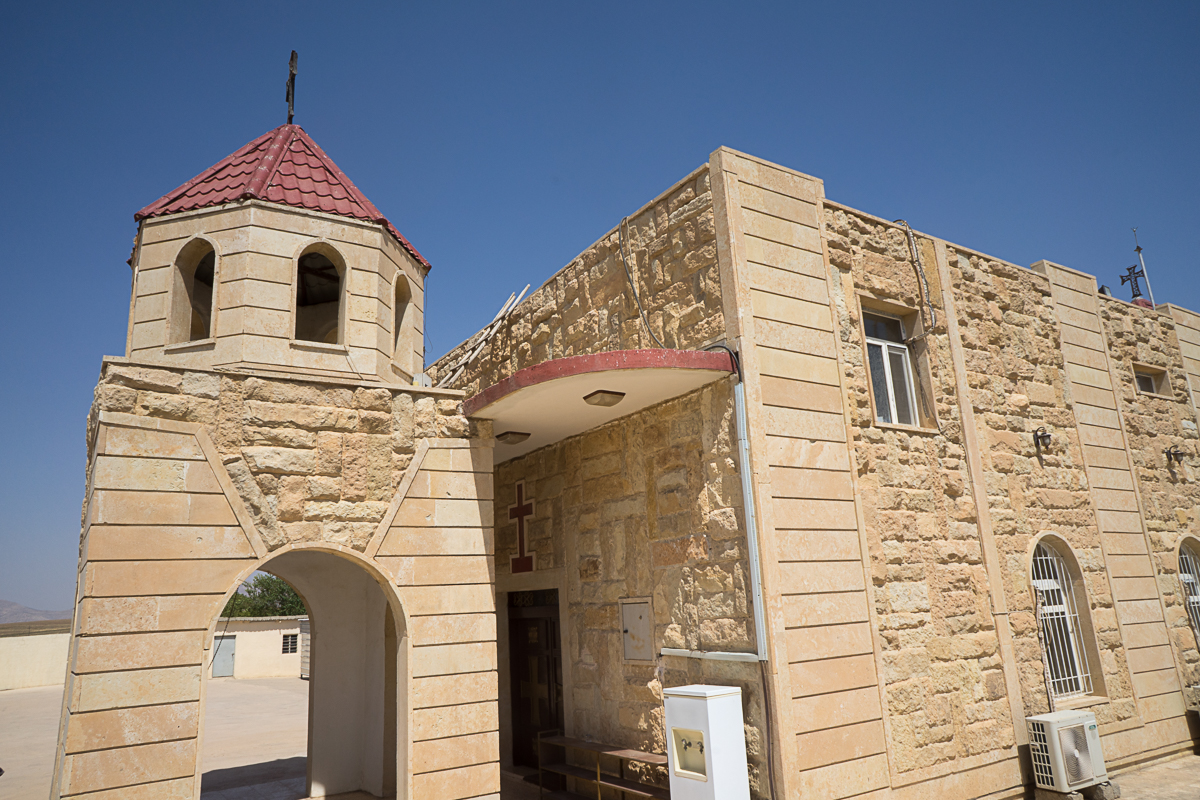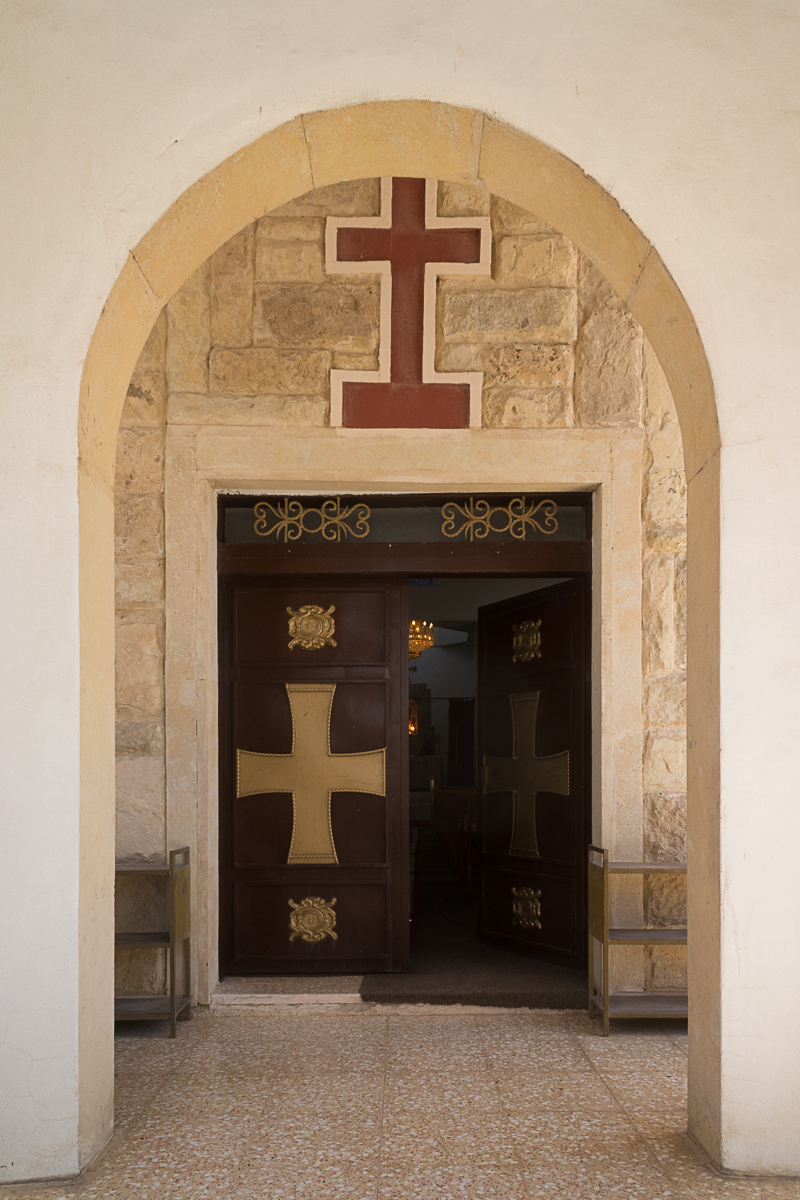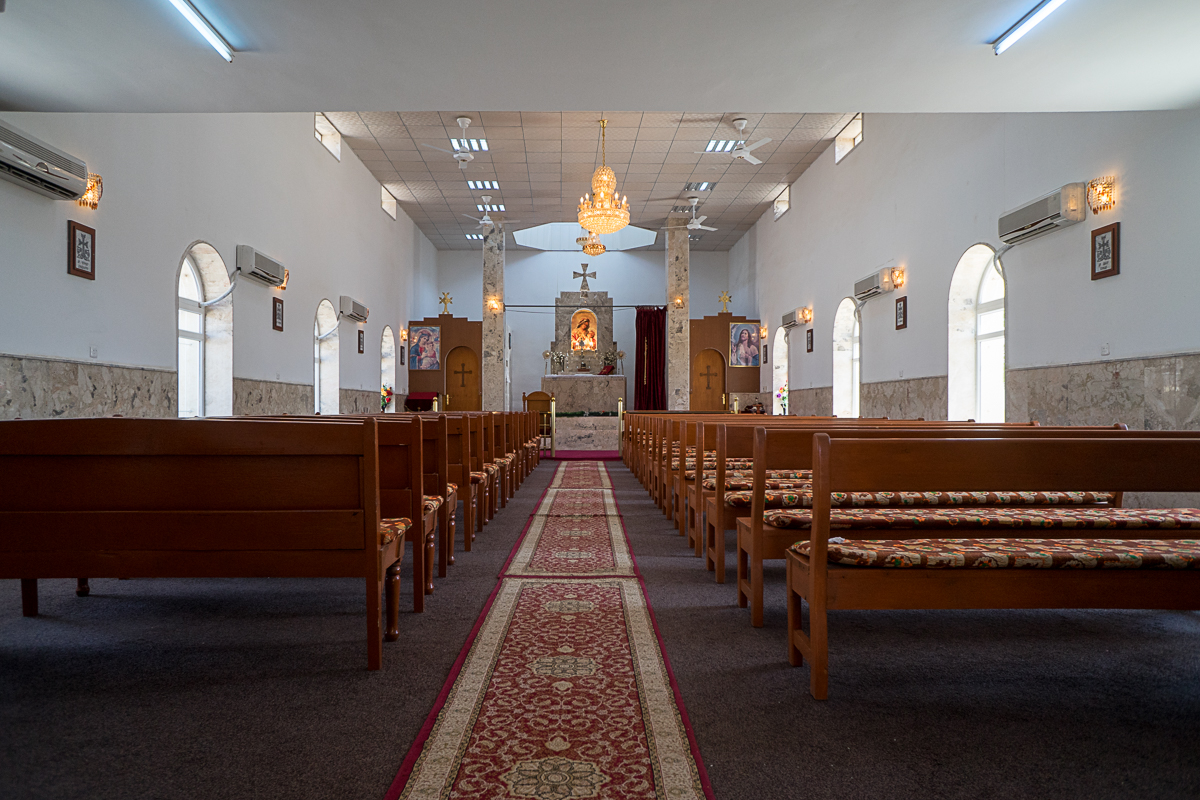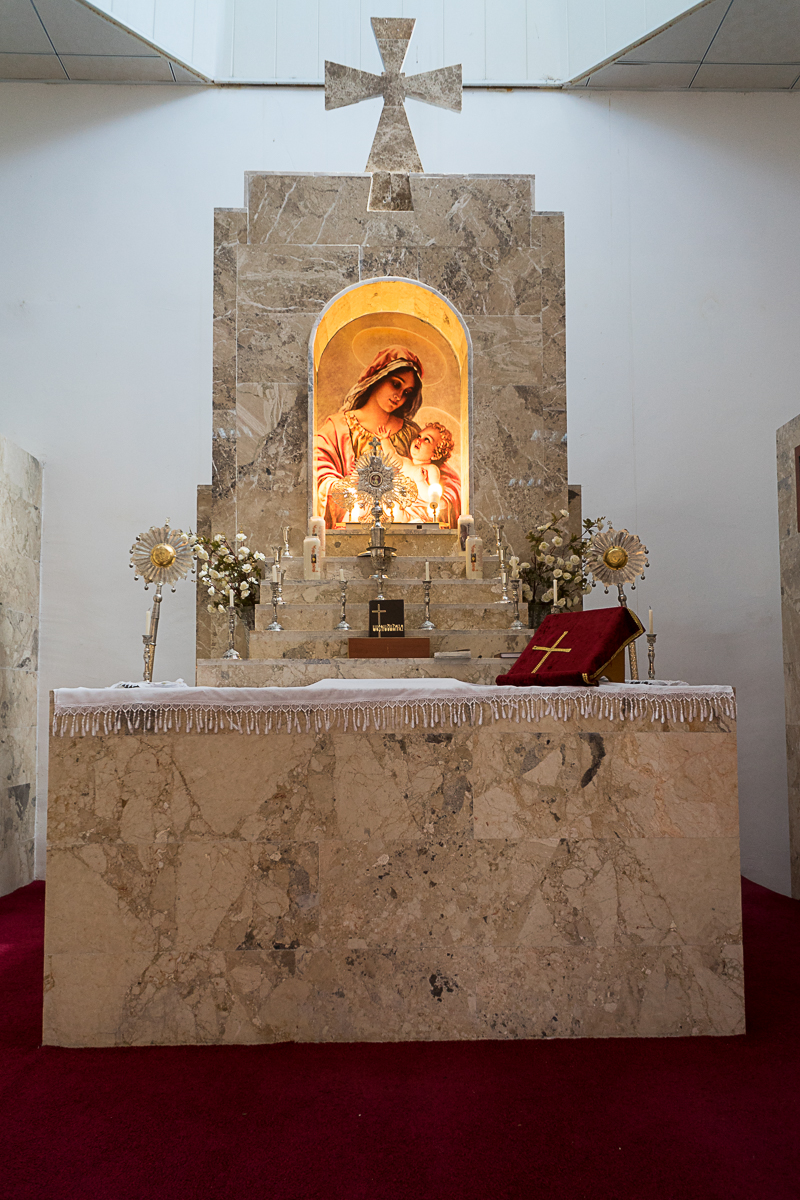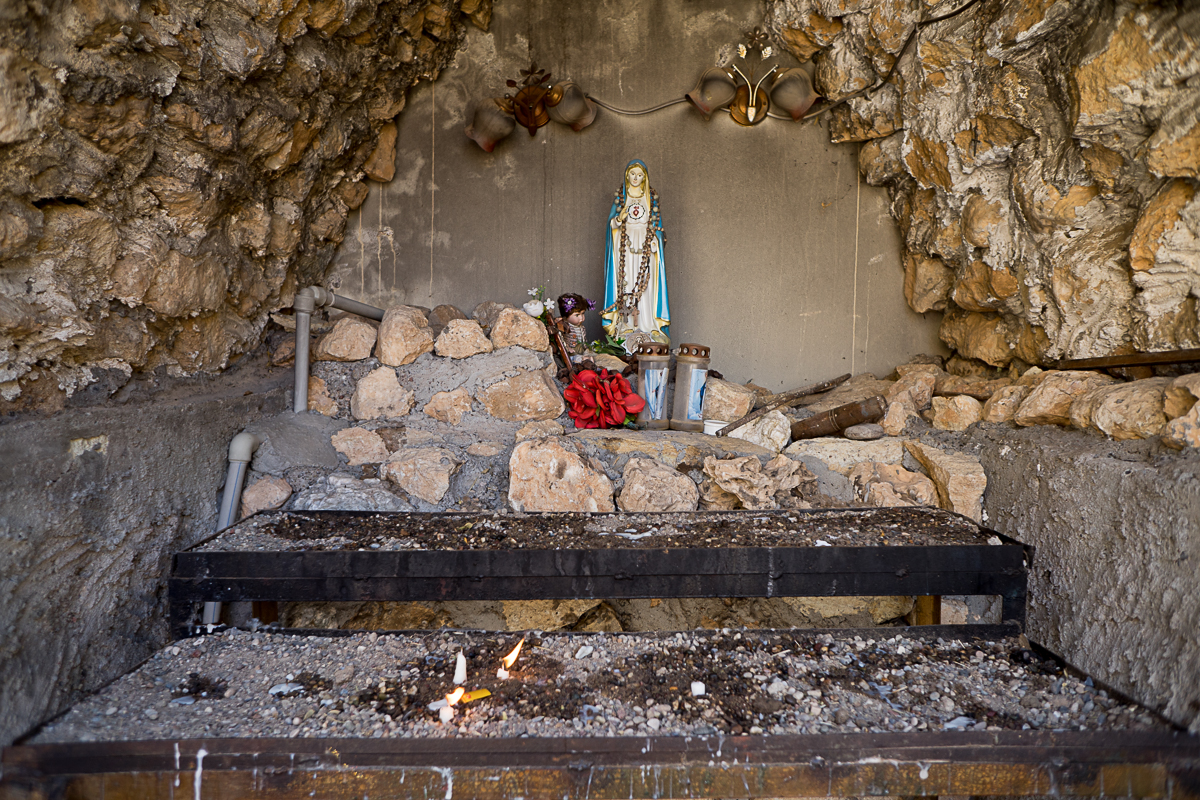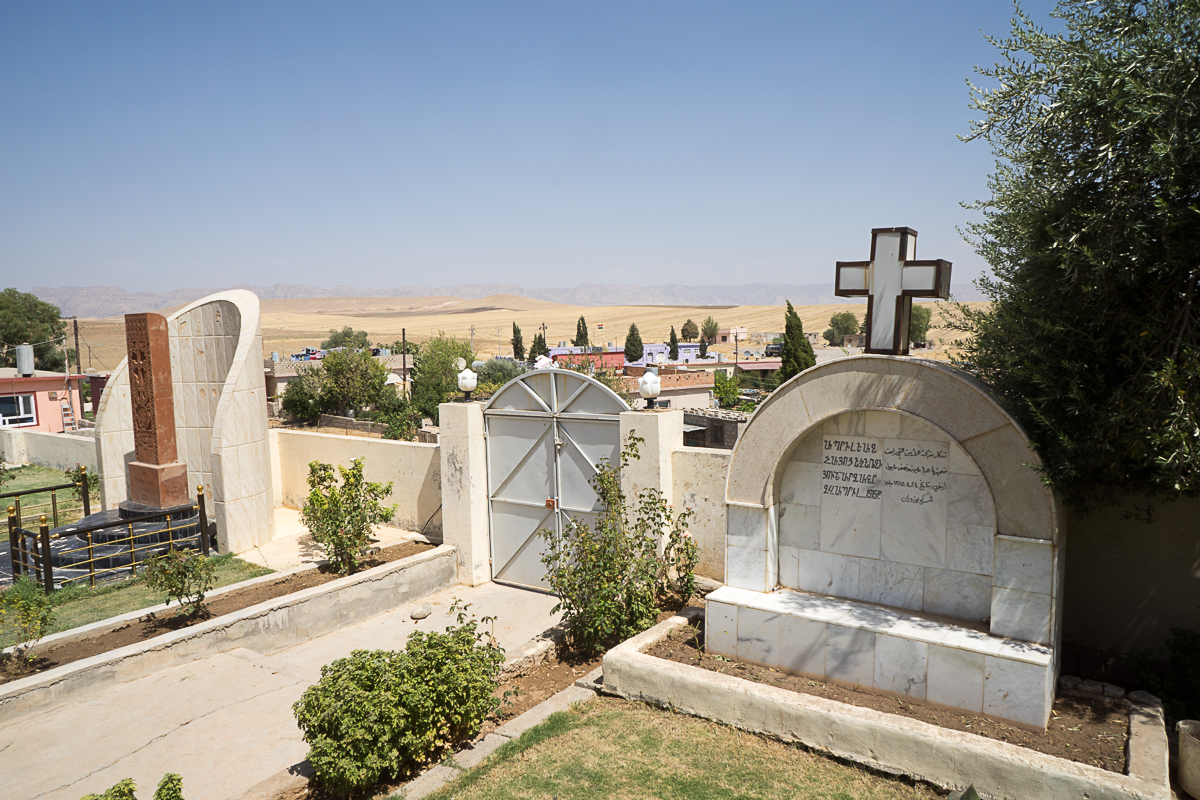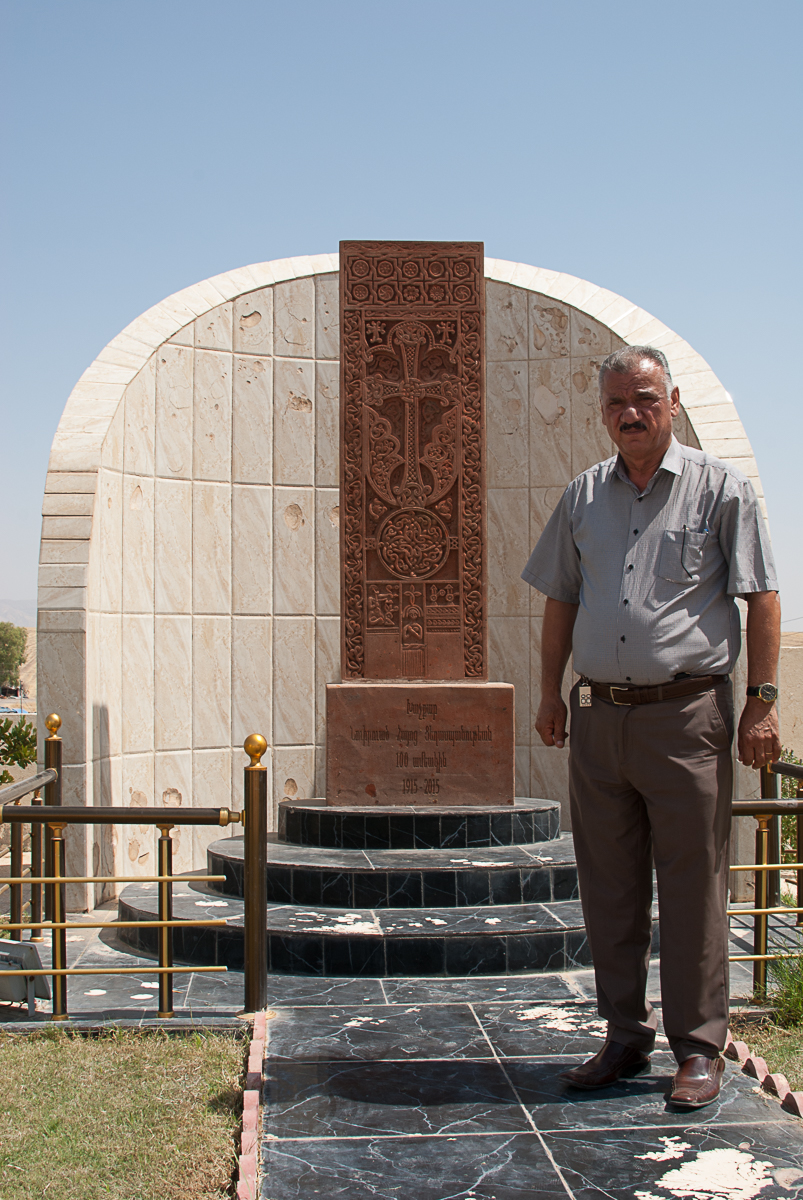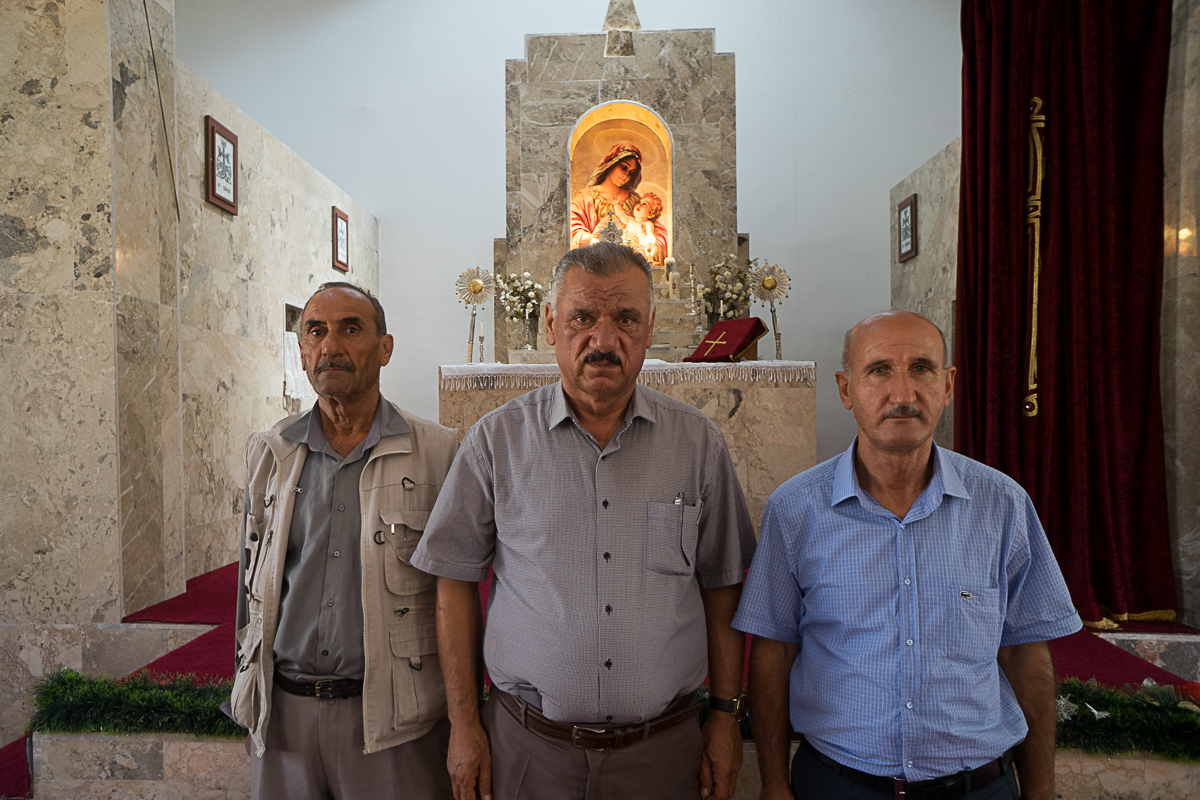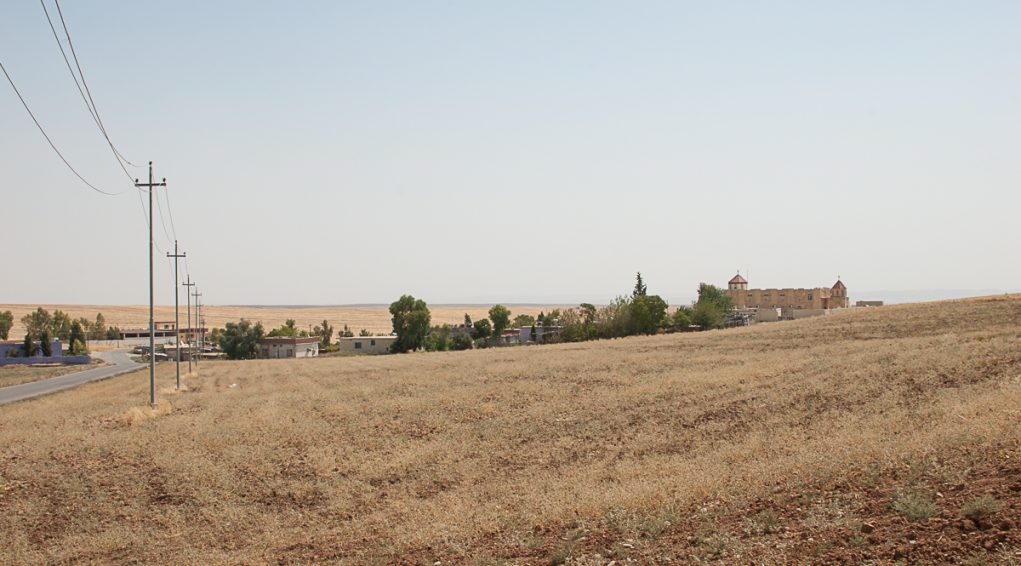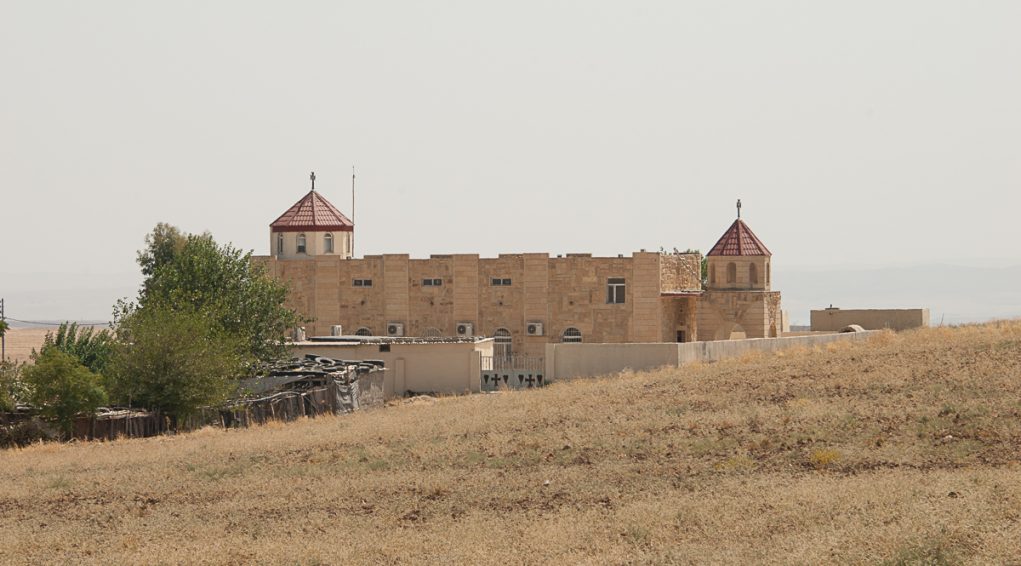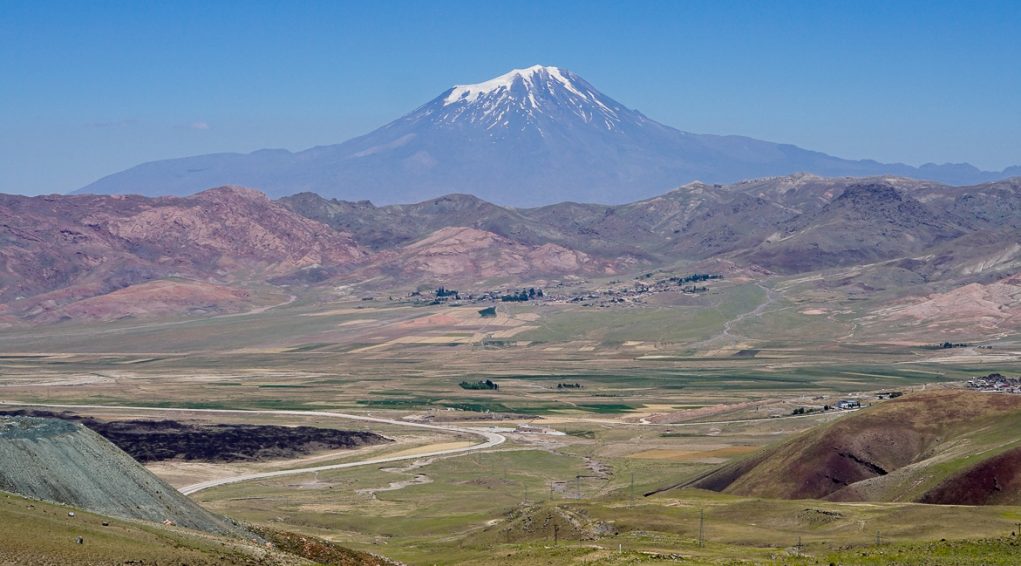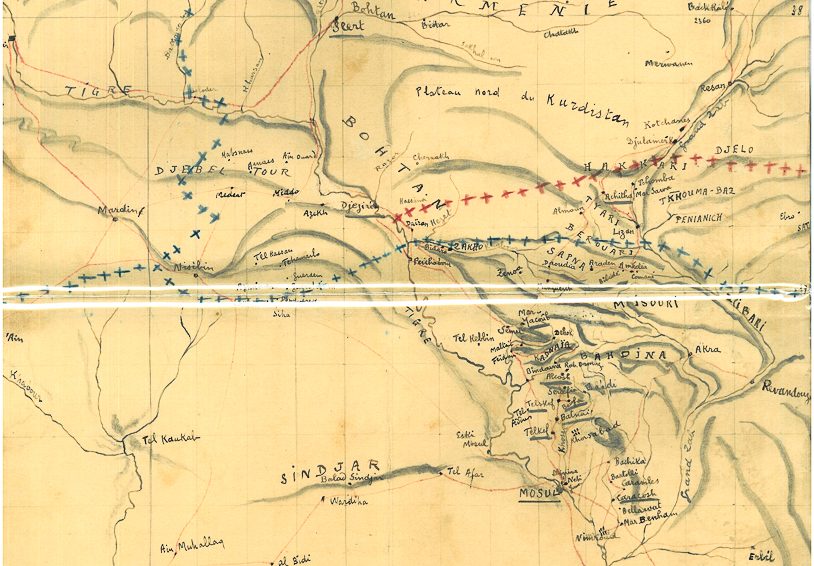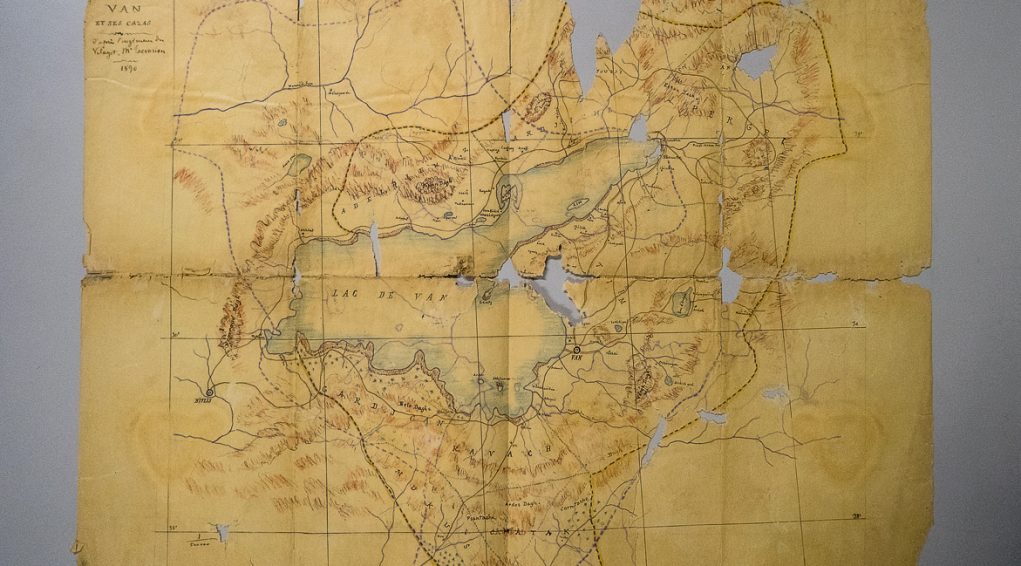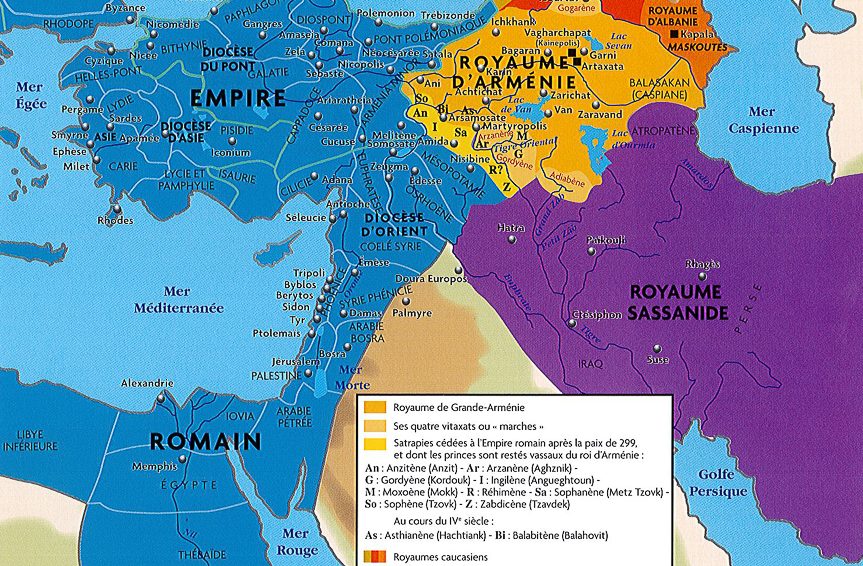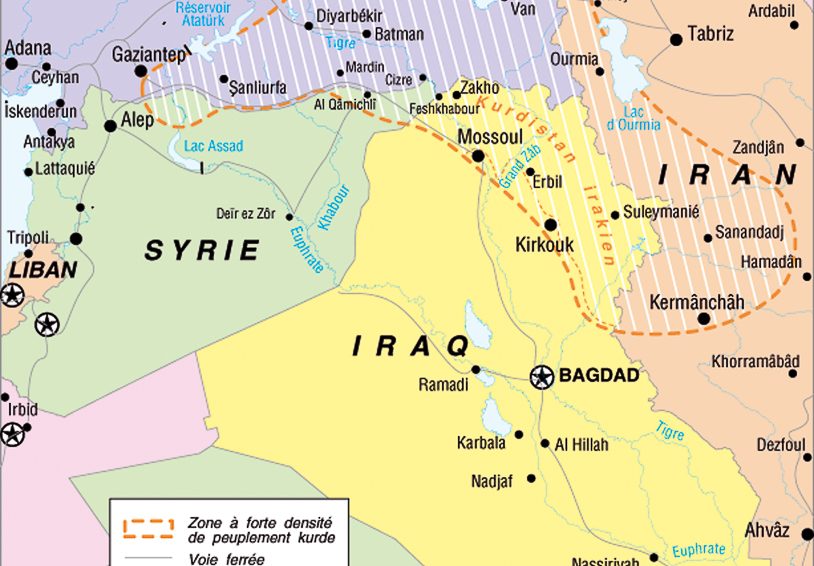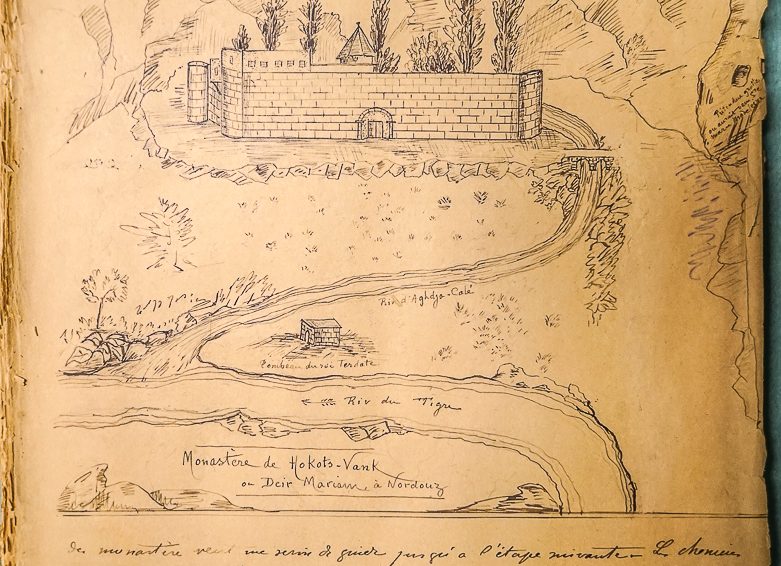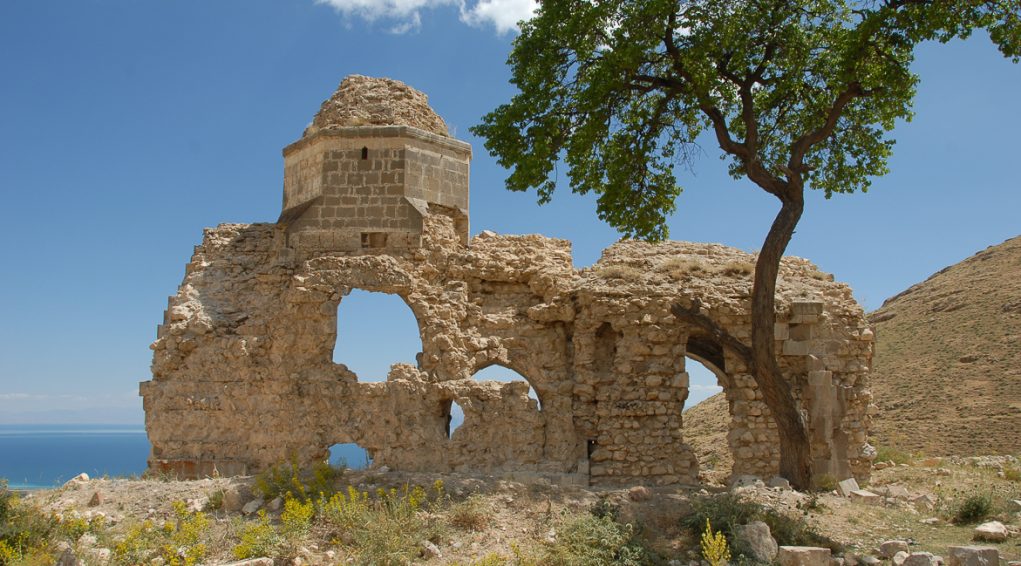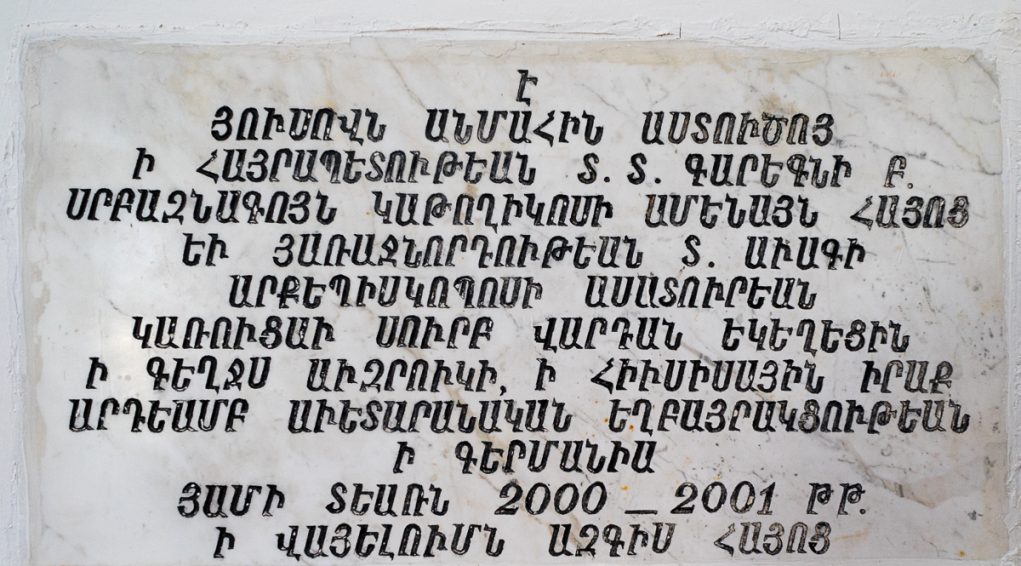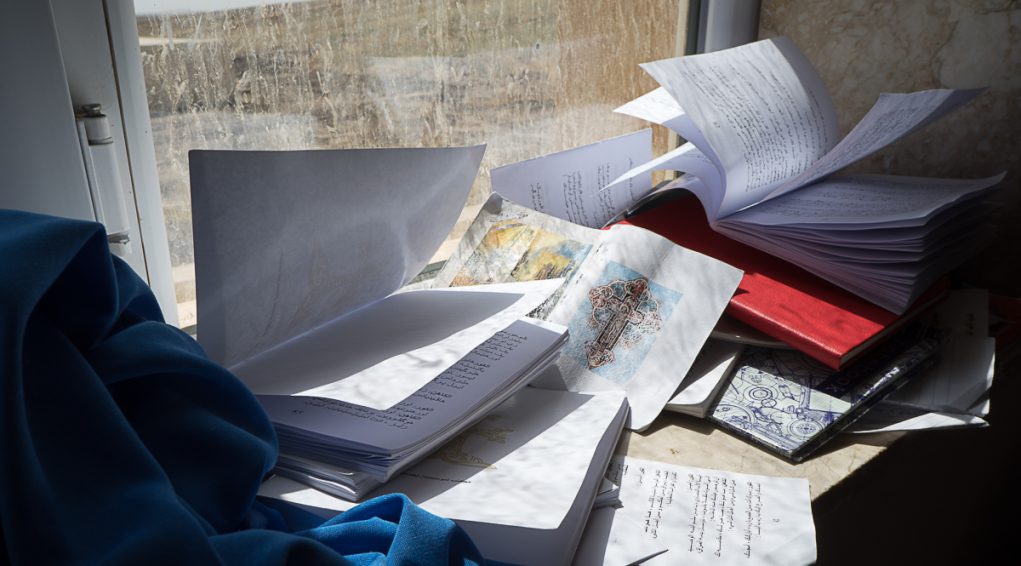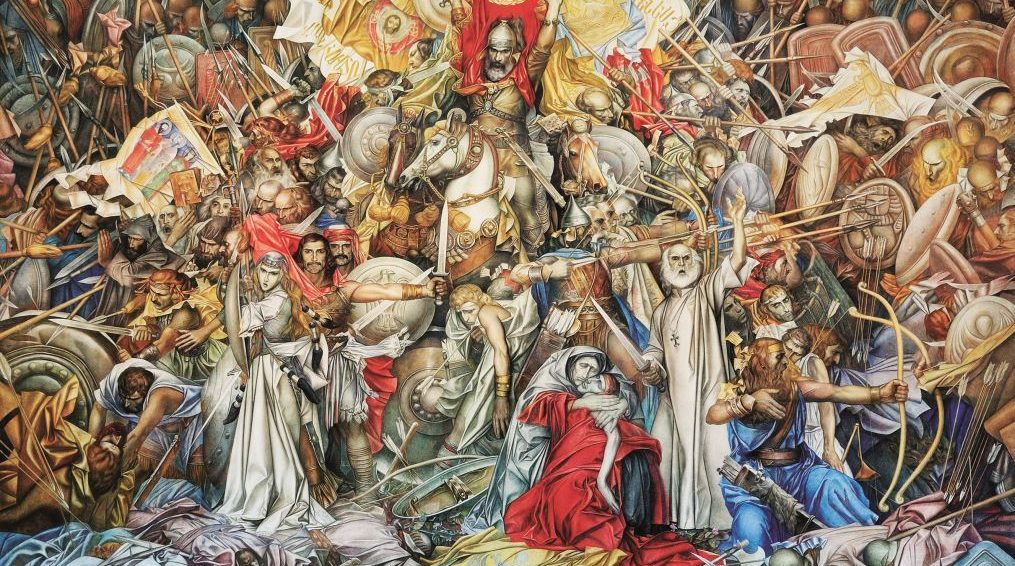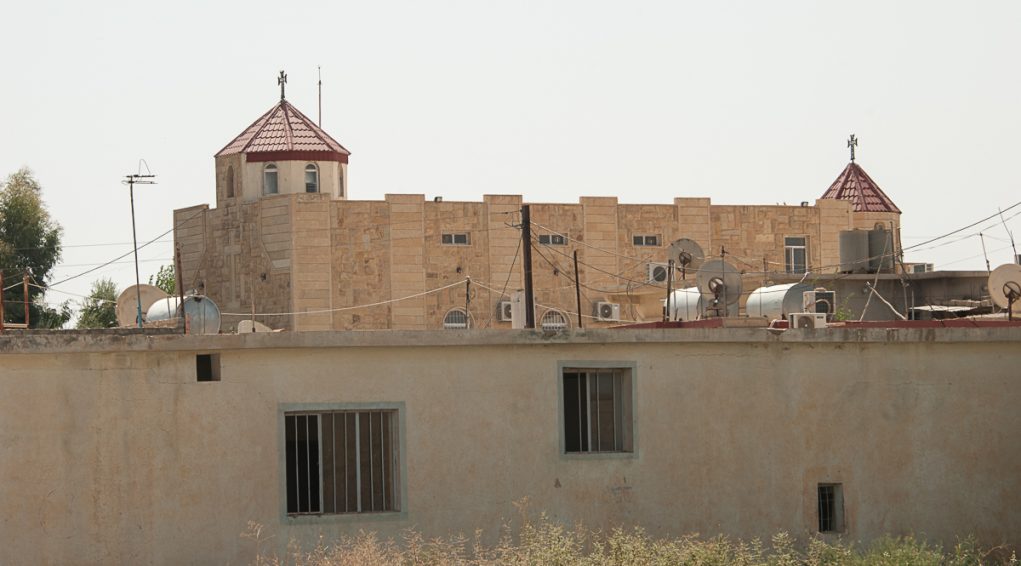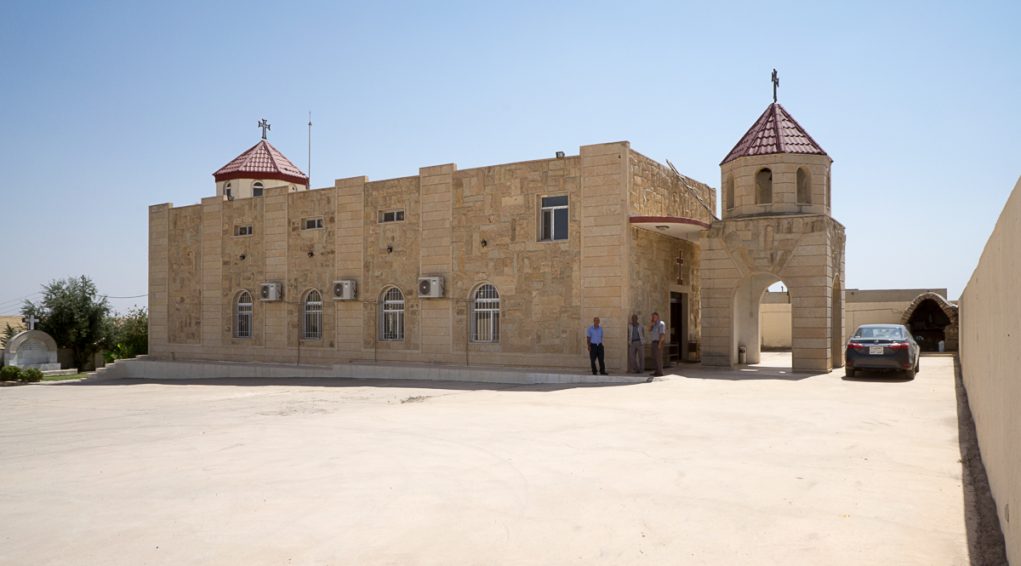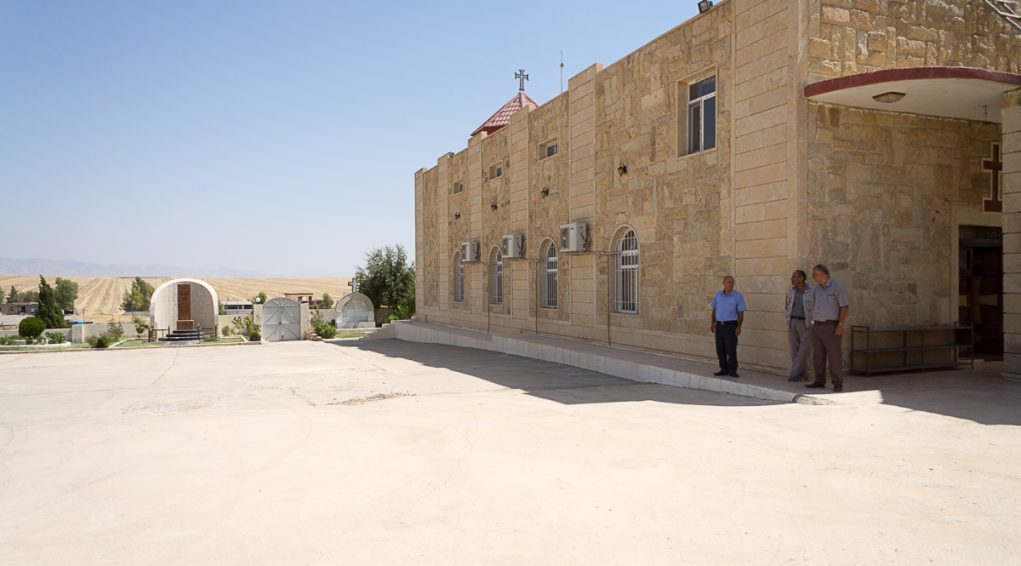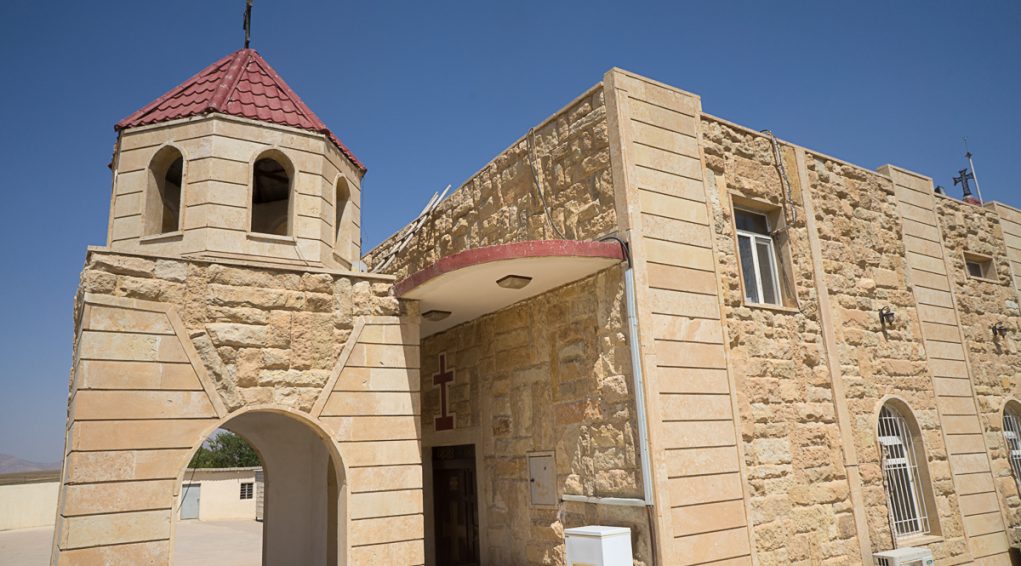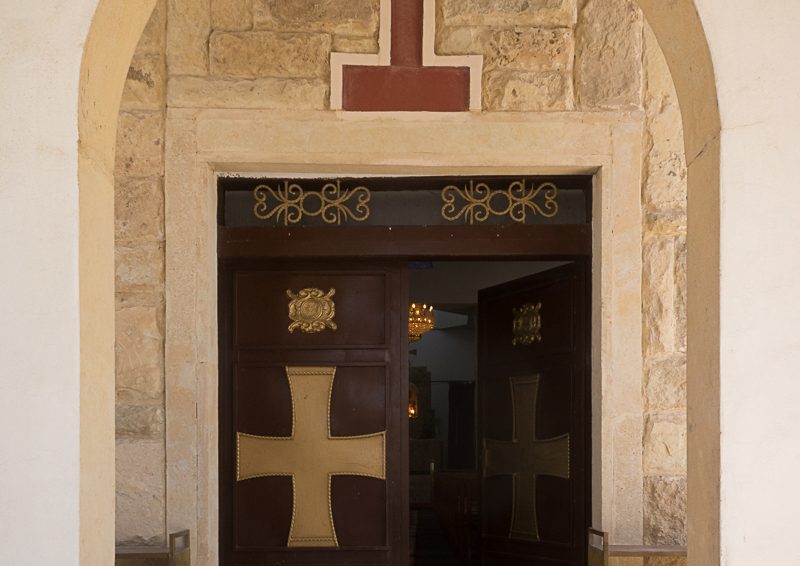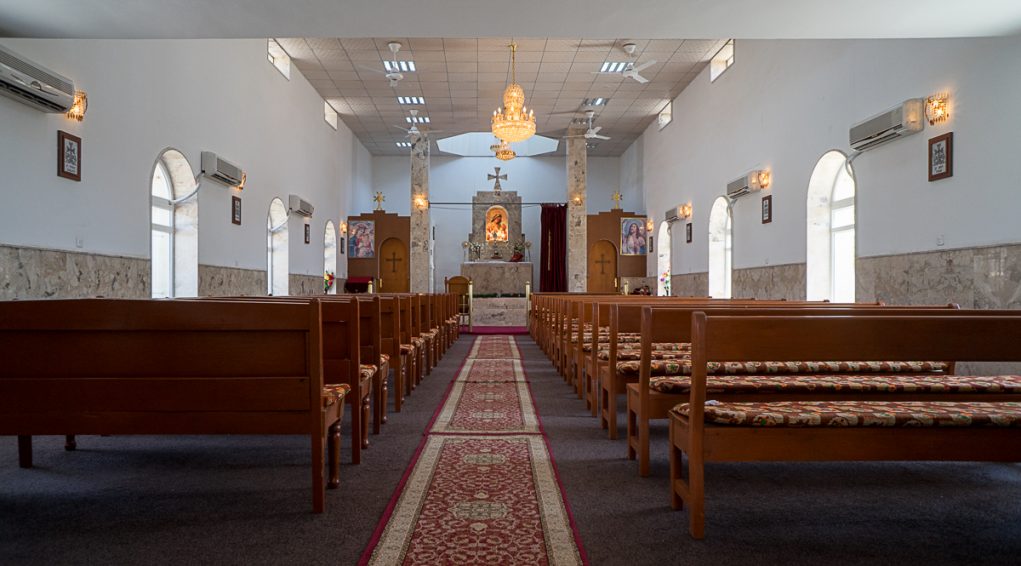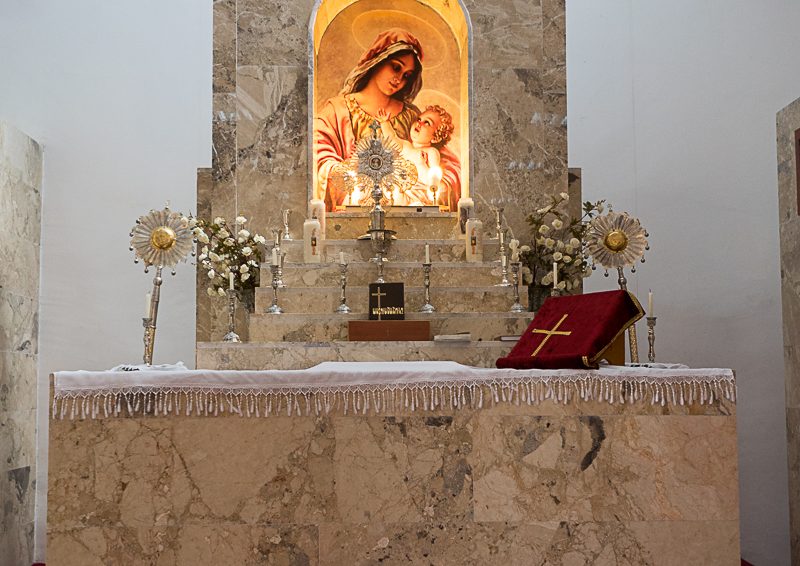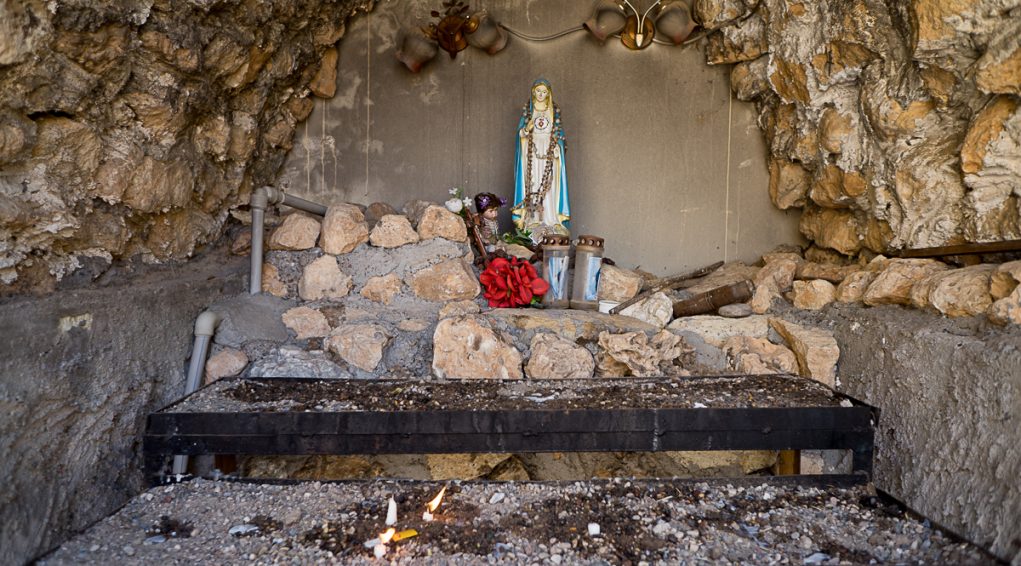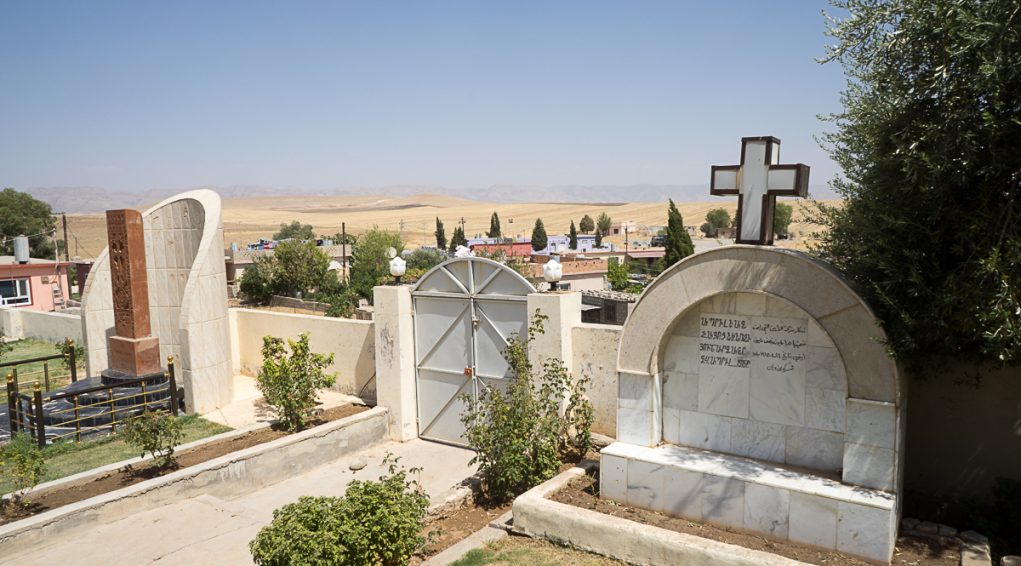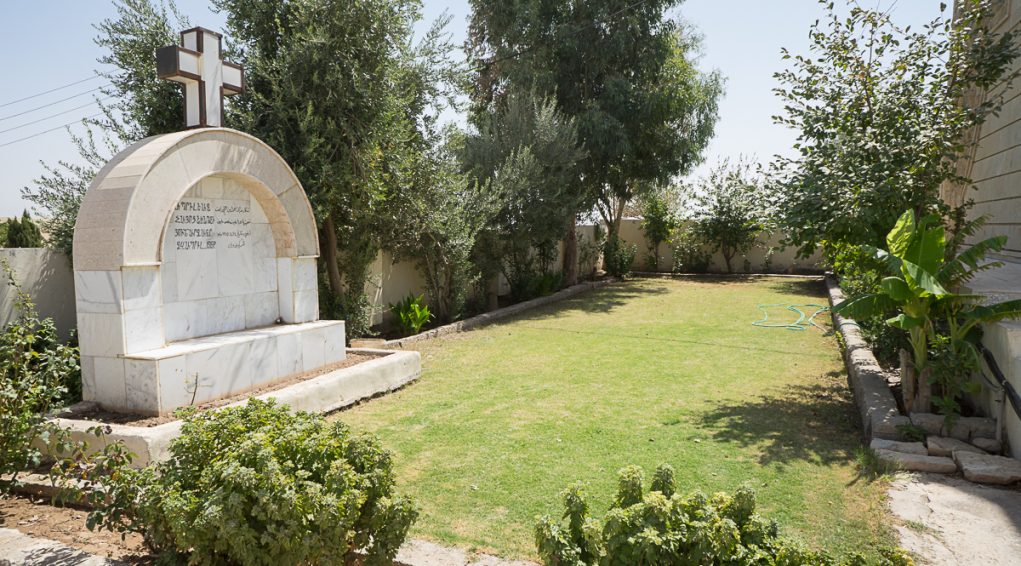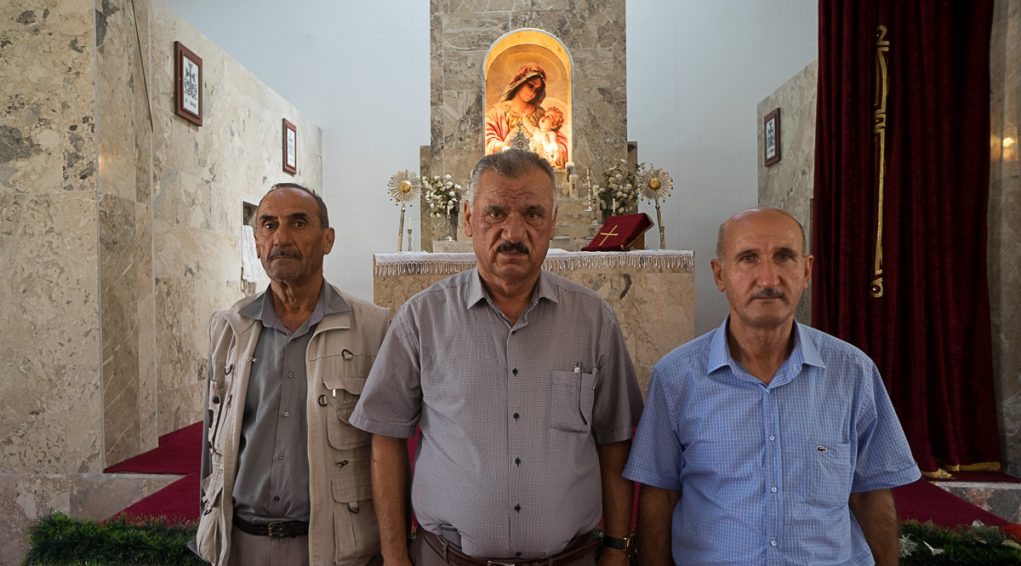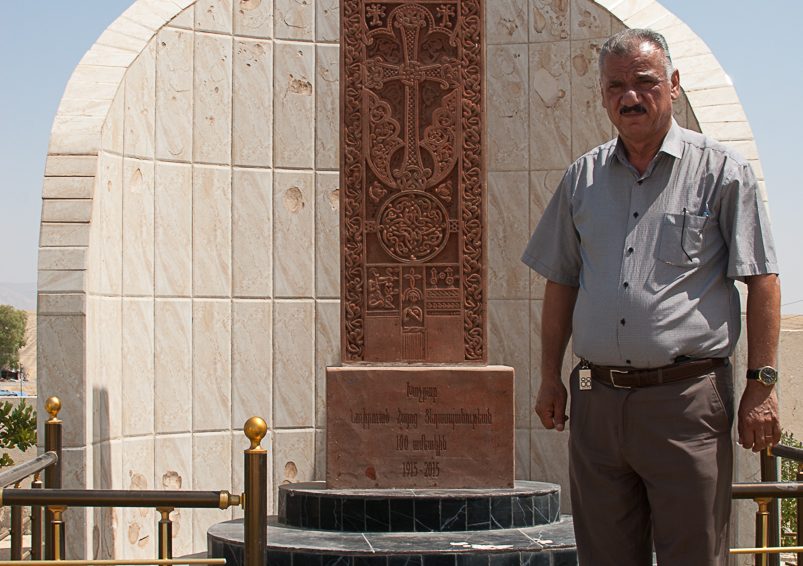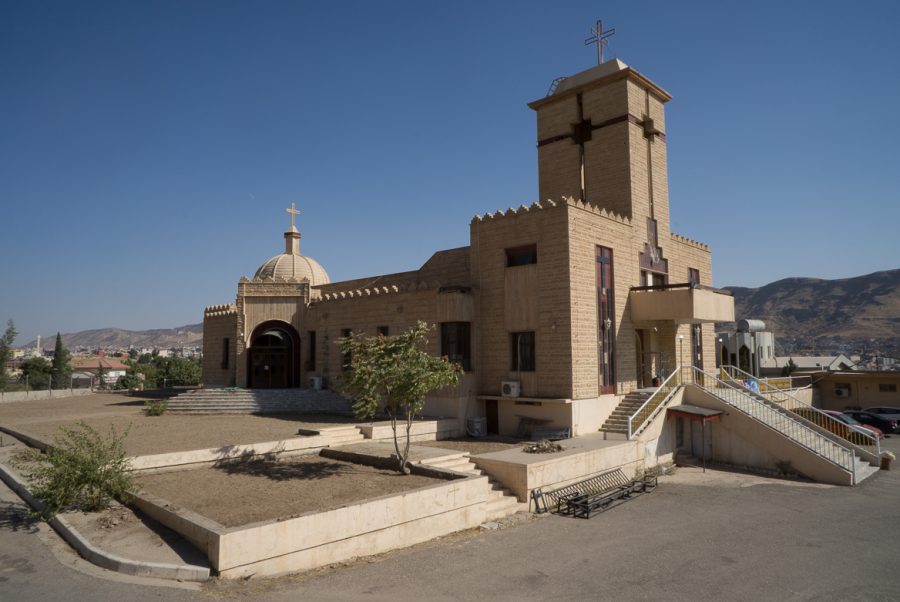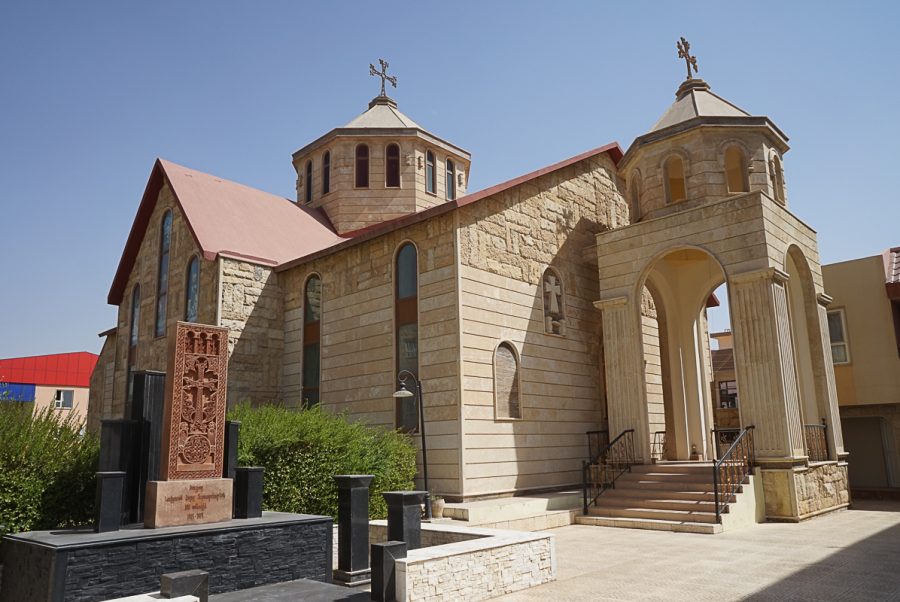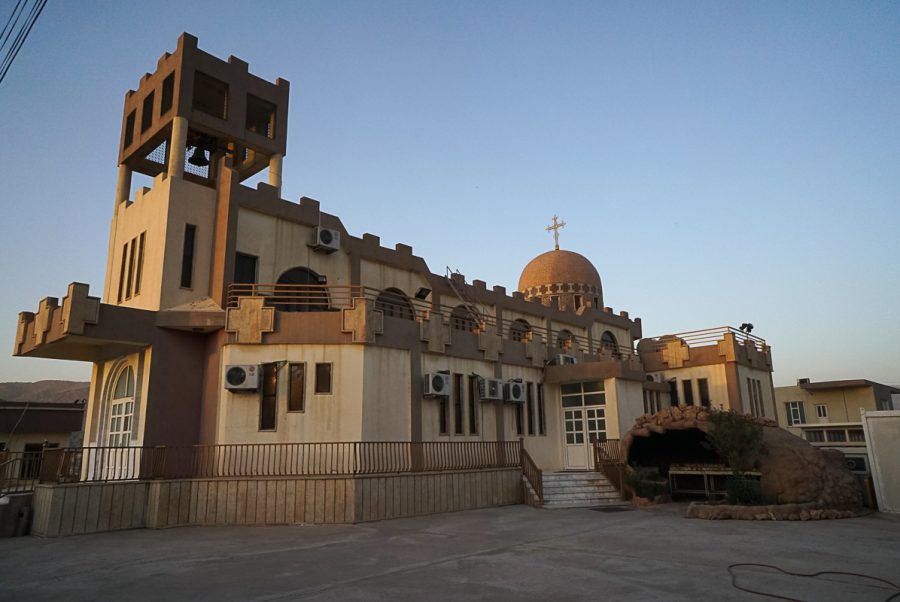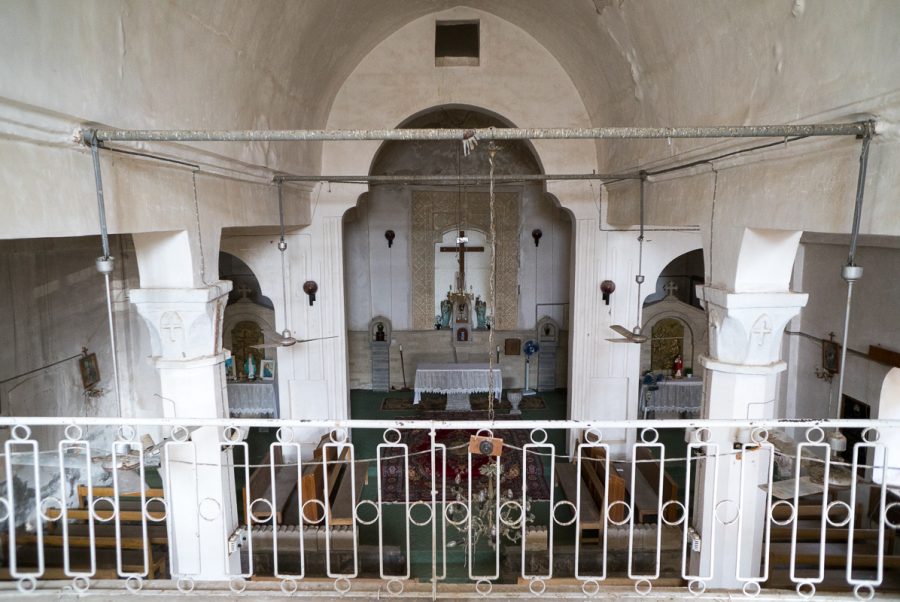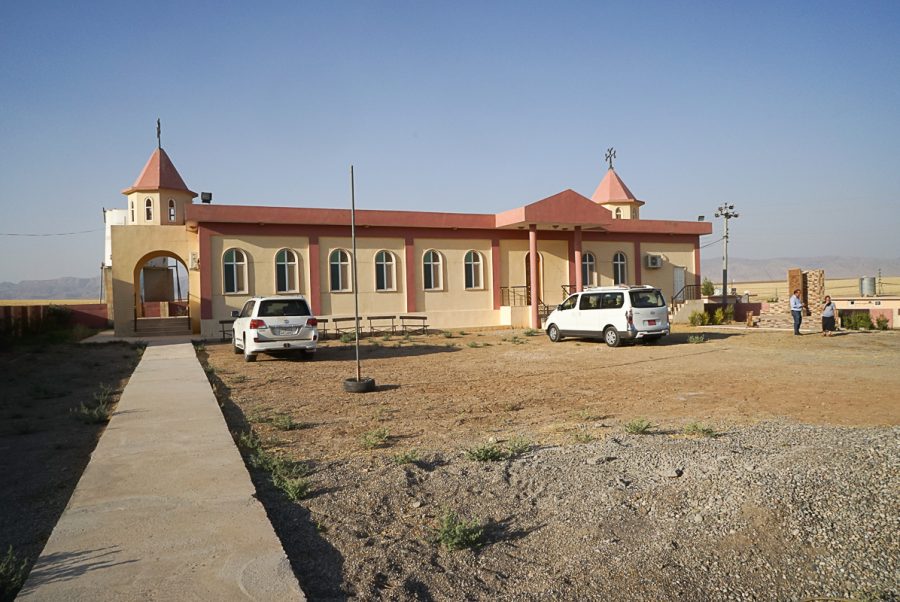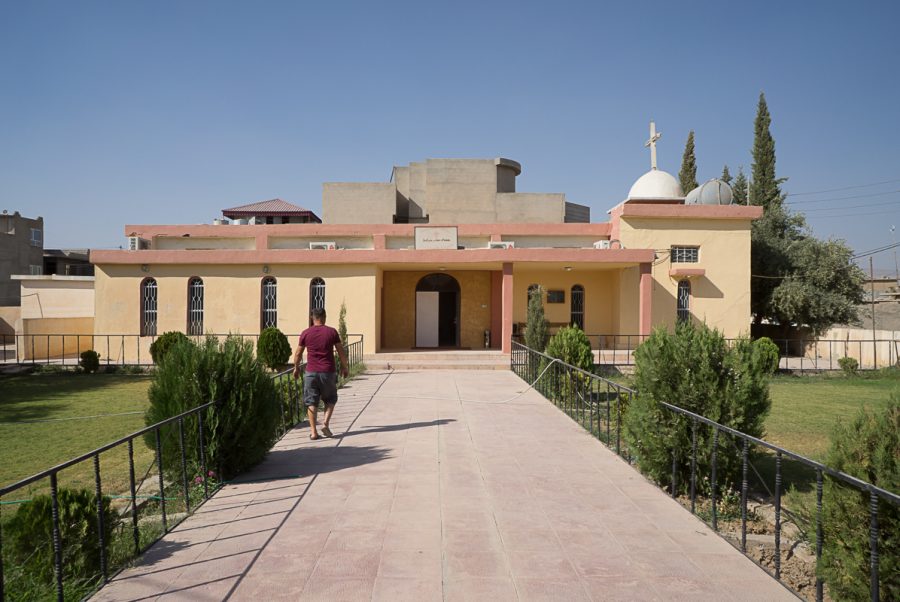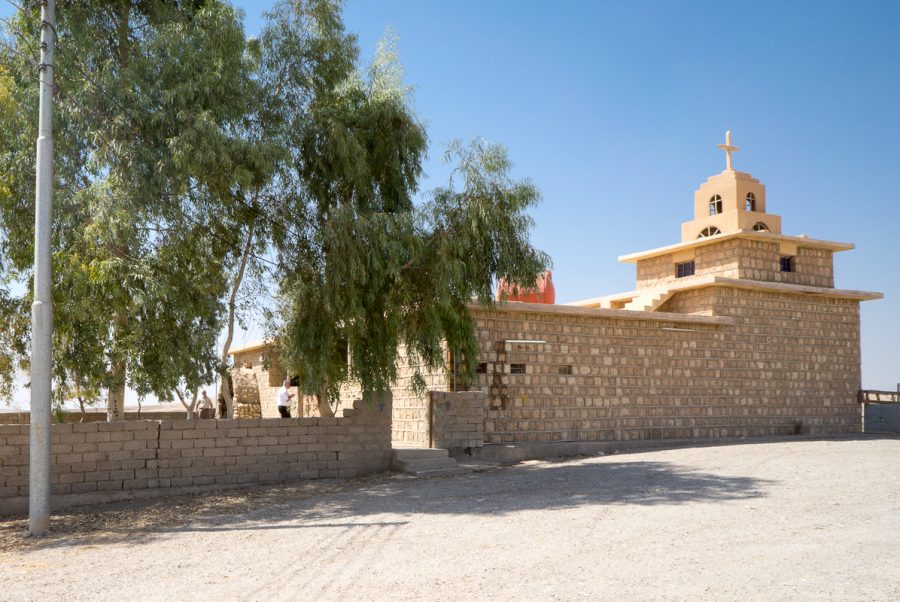The Armenian Sourp Vartan Church in Avzrok
The Armenian Apostolic Church Sourp Vartan is located at 36°56’35.44”N 42°37’42.92”E and 470 metres altitude, in Avzrok, in a village rebuilt for the Armenian community.
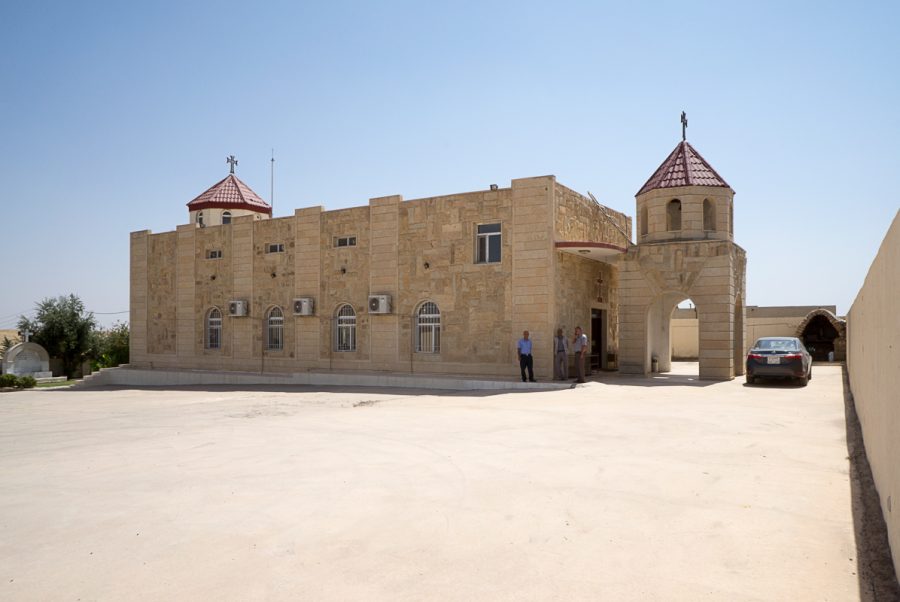
The history of the village of Avzrok is directly linked to the genocide of the Armenians in 1915 – 1917. The village was founded in 1933, by Armenian survivors from the village of Gaznar (close to Van in Turkey), who settled in Zakho at the end of their exodus. In 1975, after the Kurdish rebels led by Mustafa Barzani were defeated, Saddam Hussein decided to Arabise the entire region. He had Avzrok evacuated and destroyed, as well as all the other villages in this sector. The Armenians gradually returned to Avzrok as of 1996, with a surge in 2005 when the village was rebuilt with financial support from the Kurdish government. Fifty-five Armenian families live in Avzrok. The Armenian Apostolic Church Sourp Vartan was built in Avzrok with financial support from the charity Caritas. It was the village’s very first church. From 1933 to 1975 services were held in houses. It was not possible to build a church due to a lack of funding.
Pic : The Armenian Apostolic Church Sourp Vartan in Avzrok. August 2017 © Pascal Maguesyan / MESOPOTAMIA
Location
The Armenian Apostolic Church Sourp Vartan is located at 36°56’35.44”N 42°37’42.92”E and 470 metres altitude, in Avzrok[1], 36 km to the north-west of Dohuk-Nohadra, 95 km to the north-west of Mosul, 177 km north-west of Erbil and 26 km south of Zakho close to the Turkish border and 50 km east of Faysh Khabur on the Syrian border.
_______
[1]There are two Avzrok villages. One Armenian, one Assyrian. They are 10 kilometres apart. The Armenian village is called Avzrok Miri, and the Assyrian village is known as Avzrok Shno.
Origins of the Armenian presence in Iraq
The origins of an Armenian presence in Mesopotamia have come along for centuries since Antiquity. In the 1st century BC, the Adiabene kingdom (with Arbeles/Erbil as “capital city”) was part of the Armenian Kingdom of Tigranes II the Great. At the very beginning of the 4th century, the area of Abadiene, which was then the most southern territory of the kingdom of Armenia, became the very first Christian “state” in History, around 301. “What also seems reliable is that there has been a meeting, around 328-329, between the only two Christian sovereigns in those times: the Roman emperor Constantine I and the Armenian Tiridates III. Constantine I confirmed the role of Tiridates III in the evangelisation of the East. In this way, the Armenian missionaries participated in the evangeliastion of Mesopotamia and the Sassinid kingdom, as recounted by the Greek historian Sozomene, in around 402: “then amongst the neighbouring peoples, the belief progressed and grew in large numbers and I think that the Persians became Christians thanks to the relationships they had with the people of Osroene[1]and Armenia (…)”.[2]
In the 17th century, new Armenian communities settled in Iraqi Mesopotamia after the Persian Shah Abbas I conquered Baghdad in 1623. In the early years of the 17th century, the Persian king forced the Armenian population of Julfa (former Armenian city in the Nakhichevan, on the northern bank of the Aras river) to exile. 12,000 Armenian people were then moved to New Julfa (Nor Djougha), at the gates of Isfahan, to take part in the development of the Safavid-Persian Empire’s new capital city. After Shah Abas died, the Armenians from Persian endured times of troubles. Lots of them moved to Mesopotamia and settled in Basra (south of modern day Iraq), whereas others set off to India.
When the Ottoman Sultan Murad IV regained control over Baghdad in 1638 with the help of Armenian Ottoman soldiers and a new phase started for an Armenian settling in Baghdad. All along the Ottoman domination’s period and until the fall of the Empire at the beginning of the 20th century, the Armenians developed their institutions so much that by the end of the 19th century they were nearly 90,000 living in Iraq. [3]
The genocide of the Armenians in the Ottoman Empire in 1915-17 was the last and terrible reason of their migration towards Iraqi Mesopotamia. Deported from the eastern provinces of the Empire, coming from the North (Diyarbekir) along the Tigris river, from the West (Ras-al-Ain) along the railway from Aleppo to Baghdad, or also from Van and then coming first through Persia, the Armenians arrived in some relegation areas such as Zakho, Havresk, Avzrok but also Kirkurk, Bakouba and Mosul. At this time a particularly tragic incident took place. In January 1916 over just two nights, 15,000 Armenian deportees living in Mosul and the surrounding area were exterminated, tied together in groups of ten and thrown into the Tigris river. Already, well before this carnage, on 10th June 1915, the German consul to Mosul, Holstein, telegraphed his Ambassador, reporting telling scenes
“614 Armenians (men, women and children) expulsed from Diarbekyr and transported to Mosul, were all killed en route, as they were transported by raft (on the Tigris). The kelek arrived empty yesterday. For a few days now the river has been carrying corpses and human limbs (…)” [4]
Nowadays, the Armenians in Iraq mostly descend from people who survived the 1915 genocide. Rather discreet on the political scene, they were known for being loyal and developed their own educational, social and religious infrastructure.
From a religious point of view, the Armenians from Iraq are mostly members of the Armenian Apostolic Church (autocephalous church since its origin in 301), some are members of the Catholic community[5]and some others joined a small evangelic community.
After Saddam Hussein’s regime fell in 2003, the situation worsened considerably. The attacks from Islamic and Mafia groups against Iraqi Christians also targeted the Armenians and their churches. On August 1st 2004, the Armenian Catholic church Our Lady of the Rosary, in Baghdad, Karada district, was struck by a bomb attack. An Armenian church under construction was also targeted on December 4th 2004. For nearly 20 years, these successive spates of violence set the tempo for Iraqi Armenians’ mass exodus. The battle of Mosul over the summer 2017 and the bombing intensity also affected the Armenian heritage. Before 2003, there were probably more than 25 000 Armenians in Iraq, whereas today the community leaders assert there are 10 000 to 13 000 Armenians still living in Iraq. Half of them are said to be living in Baghdad. The remainder live in Iraqi Kurdistan, Kirkuk, Sulaymaniyah, as well as Basra. There are no more Armenians in Mosul.
_______
[1]The people of Osroene were the inhabitants of Edessa. Edessa was a major capital city in ancient times, before becoming a powerhouse of Christianity during its infancy. Armenian tradition recounts that the King of Edessa and Armenia, Abgar V, wanted to welcome Christ to his Kingdom and issued an invitation. It was not Christ who came to Edessa but one of his apostles Thaddeus (Jude). Edessa was renamed Urfa and remained the capital of the principality. This city has been known as Şanlıurfa since 1984 (in Turkey).
[2]In “Arménie, un atlas historique”, p.22 and map p.23. Publisher Sources d’Arménie, 2017.
[3]Source: Armenian Embassy in Iraq
[4]In « L’extermination des déportés arméniens ottomans dans les camps de concentration de Syrie-Mésopotamie ». Special edition of the review, Histoire Arménienne Contemporaine, Tome II, 1998. Raymond H.Kevorkian. p.15
[5]The website of the Armenian Embassy in Iraq reads as follows:“In 1914, there were 300 Armenian Catholics in Iraq. After the First World War and up until 2003, the community reached a total of 3,000 members. Nowadays, there are 200 – 250 Armenian Catholic families in Iraq. The Armenian Catholics have two churches: Our Lady of Flowers built in 1844, and the Sacred Heart of Christ built in 1937. In 1997, the main Armenian Catholic church was restored and is considered to be the largest church in Baghdad. The archbishop Emmanuel Dabaghian is the Primate of the Armenian Catholics in Iraq.”
History of the village of Avzrok and the Sourp Sarkis church
The history of the village of Avzrok is directly linked to the genocide of the Armenians in 1915 – 1917. The village was founded in 1933, by Armenian survivors from the village of Gaznar (close to Van in Turkey), who settled in Zakho at the end of their exodus. In 1975, after the Kurdish rebels led by Mustafa Barzani were defeated, Saddam Hussein decided to Arabise the entire region. He had Avzrok evacuated and destroyed, as well as all the other villages in this sector. Forced to leave, the Armenians from Avzrok settled in Mosul and Baghdad. After the First Gulf War, this region was placed under the rule of Iraqi Kurdistan and the Arab colonisers were expelled. The Armenians gradually returned to Avzrok as of 1996 but with a surge in 2005 when the village was rebuilt with financial support from the Kurdish government and the Christian benefactor and former Minister of the Economy and Finance, Sarkis Aghajan. Fifty-five Armenian families live in Avzrok[1]. Still today, all the families descend from survivors of Gaznar in 1915.
The Armenian Apostolic Church Sourp Vartan was built in 2002 in Avzrok with financial support from the charity Caritas. It was the village’s very first church. From 1933 to 1975 services were held in houses. It was not possible to build a church due to a lack of funding.
_______
Who was Sourp Vartan (Saint Vartan)?
Sourp Vartan (Saint Vartan), Vartan Mamigonian, lived in the 5th century. Descended from the noble military line of the Mamigonian, he embodied the Armenians’ spirit of resistance, defending their identity and Christian faith. Appointed sbarabet(general-in-chief) of the kingdom of Armenia under Persian Sassnid domination in 432, Vartan Mamigonian organised the Armenians’ resistance against Yazdgard II who wanted to impose Zorastianism. The Persian and Armenian armies clashed in the battle of Avarayr on 26 May 451. On this high plateau, in the north-west of modern-day Iran, the Persian forces largely outweighed the Armenians. The Sassinid won and general Mamigonian was killed, but the Persian losses were so great that Yazdgard II decided not to impose Zorastianism in Armenia. A hero of the faith and Armenia, Vartan Mamigonian was made a saint. The feast day Vartanantztakes place on the Thursday preceding the start of Armenian Great Lent. Vartan Mamigonian and 1,036 martyrs are celebrated with this religious and national feast.
Description of the Armenian church Sourp Vartan in Avzrok
The Armenian church Sourp Vartan stands inside a religious estate, closed off by a perimeter wall at the summit of the Avzrok village. The reinforced concrete building is covered with ochre and beige stone facing. As in the village of Havresk, the roofs of the bell tower and drum are the only features characteristic of sacred Armenian architecture.
The entrance to the building, to the west, is preceded with a bell tower porch with an octagonal drum dome, mounted with a metallic Armenian cross. There is also a side door in the south facade to enter the sacristy.
The church is 27 metres in length and 10 metres wide, in the form of a hall with a flat, terrace roof. It is lit with abundant natural light thanks to the windows in the north and south facades and the cupola.
A golden metal choir screen separates the nave from the sanctuary, which is made up of two parts. The lower part can be accessed by worshippers during the Eucharist. The upper part, the bèm, is a tribune on which stands the high altar with steps, covered in marble slabs and decorated with an icon of the Virgin and child. Behind the high altar is a narrow ambulatory, which runs along the apse wall. Either side of the altar are the baptistery, to the left, and sacristy, to the right.
An octagonal cupola with drum and windows, with a pyramid roof stands above the high altar.
On the esplanade to the east, there are several tombs and a memorial commemorating the centenary of the genocide of the Armenians (1915-2015), at the centre of which stands a khatckar (finely sculpted Armenian stone cross).
On the other side, to the west, near the entrance porch there is a reproduction of the Lourdes cave.
Testimony of Bhram Ouman, President of the Committee of the Sourp Vartan church in Avzrok
Bhram Ouman lives in the Armenian village of Chkafdal near to Avzrok and is President of the Committee of the Sourp Vartan church in Avzrok. Testimony collected by Mesopotamia on 29 August 2017.
_______
“My ancestors lived in Gaznar, close to Van, in Turkey. During the genocide of the Armenians in 1915 – 1917, they came to Zakho. They reared sheep for a living until 1933. At this time, all the villagers lived from arable and livestock farming.
Although the village was Armenian, we did not speak Armenian but Kurdish, because the surrounding villages were Kurdish. There was no school where we could learn our language. When a school was built in Avzrok in 1950, the lessons were in Arabic.
I was 15 years old, in 1975, when I was forced to leave the village of Chkafdal with my family. I returned in 2005. Today we all want to leave Iraq. Even me! There is no future here for Christians. I already have family in Belgium, Turkey, France, Canada and Sweden. But if the situation improves in Kurdistan, many people will return. Living and working as an immigrant in the West is exhausting. Families have no relationships, no time, all they do is work day and night.”
Monument's gallery
Monuments
Nearby
Help us preserve the monuments' memory
Family pictures, videos, records, share your documents to make the site live!
I contribute
